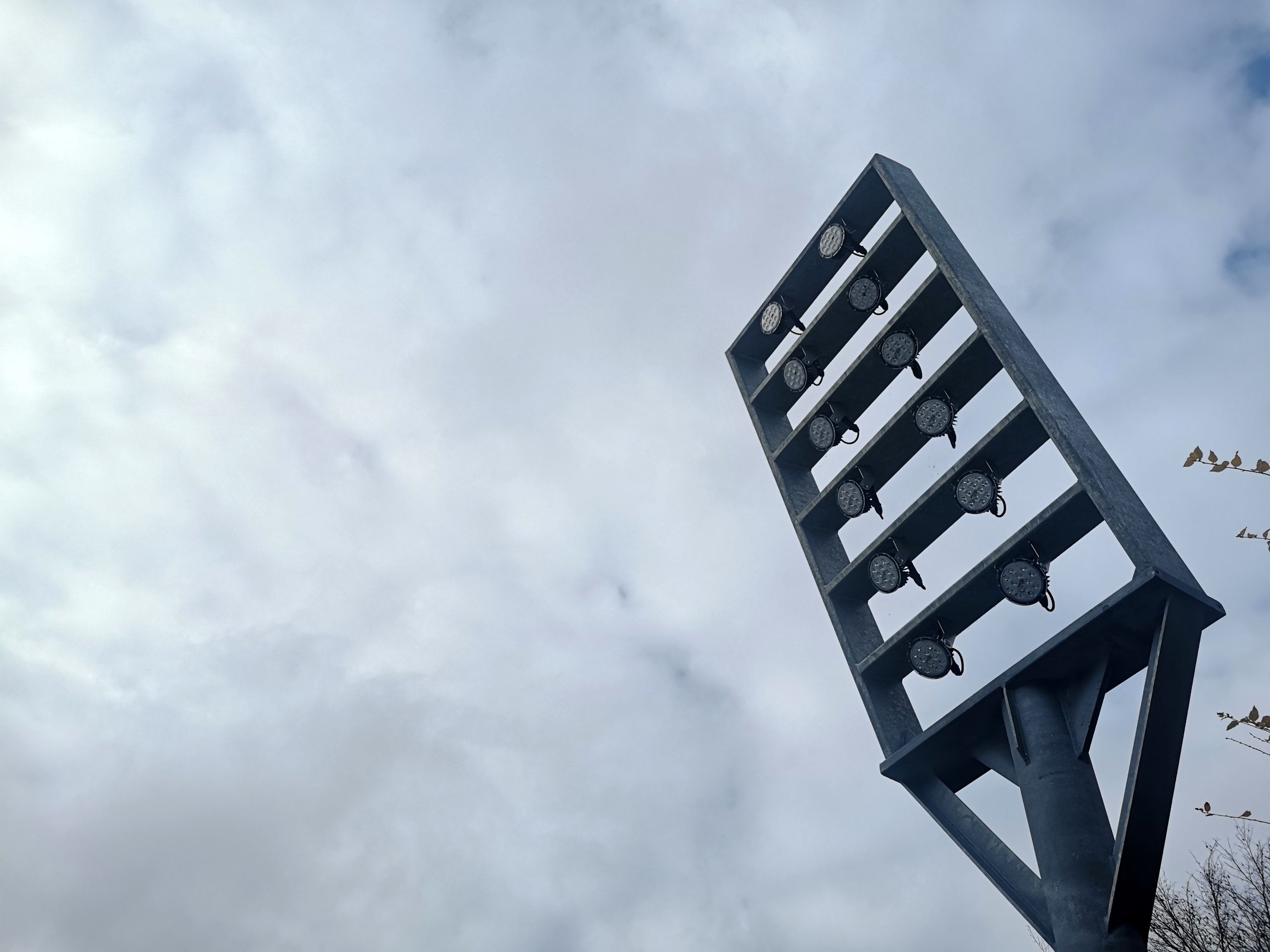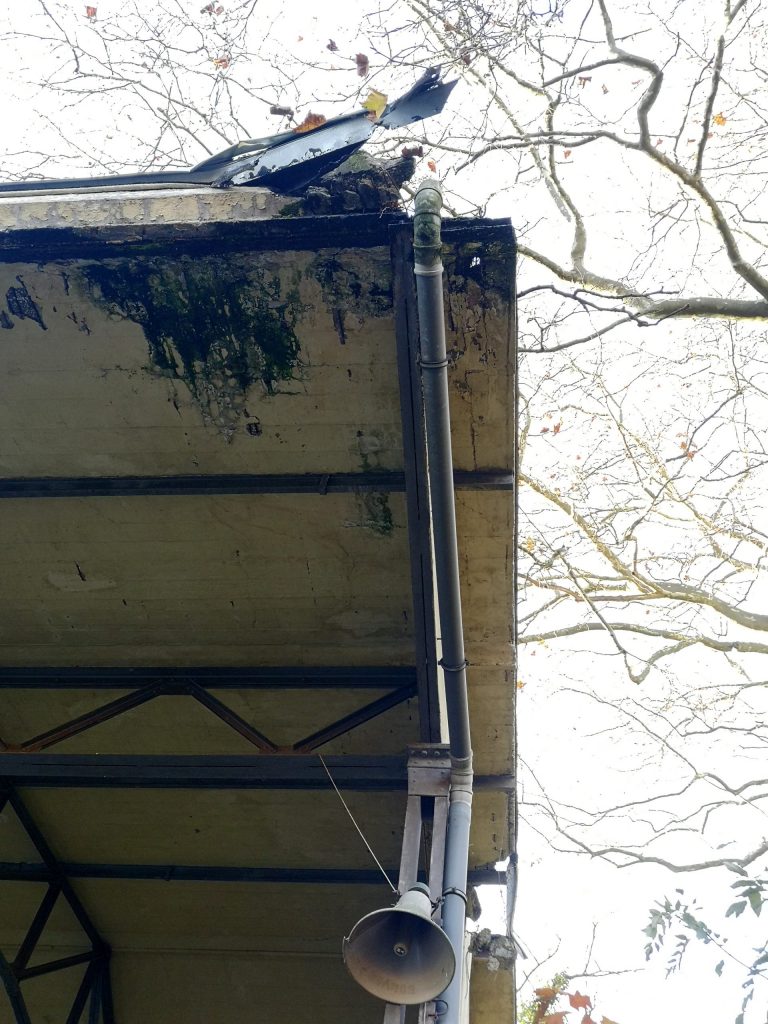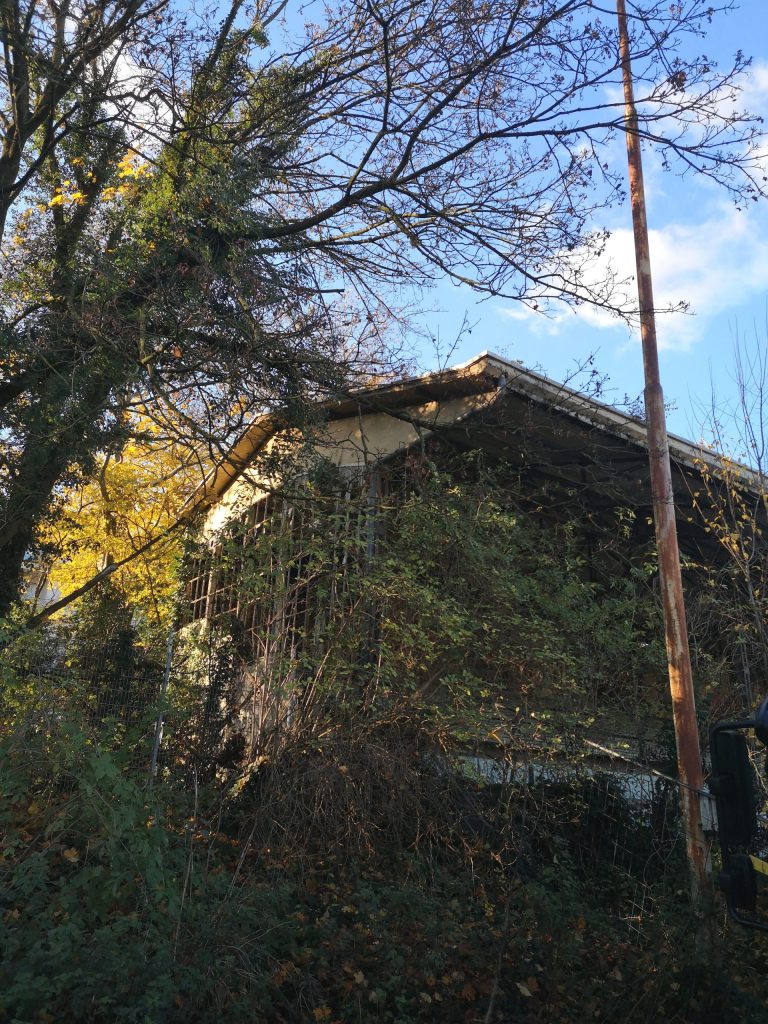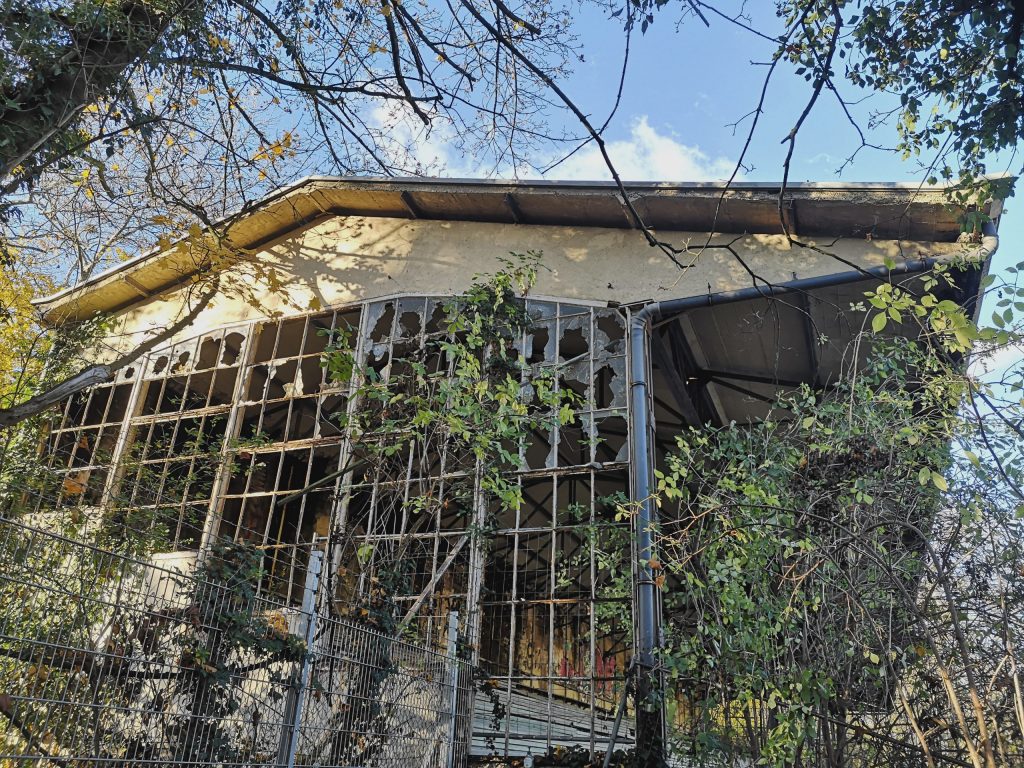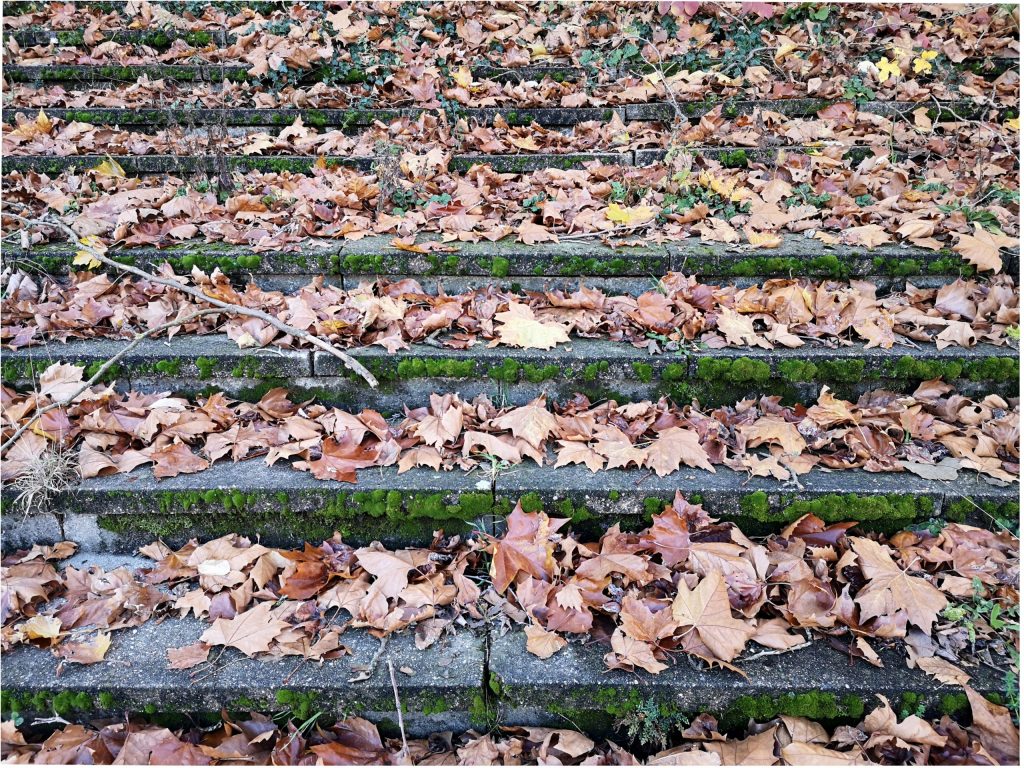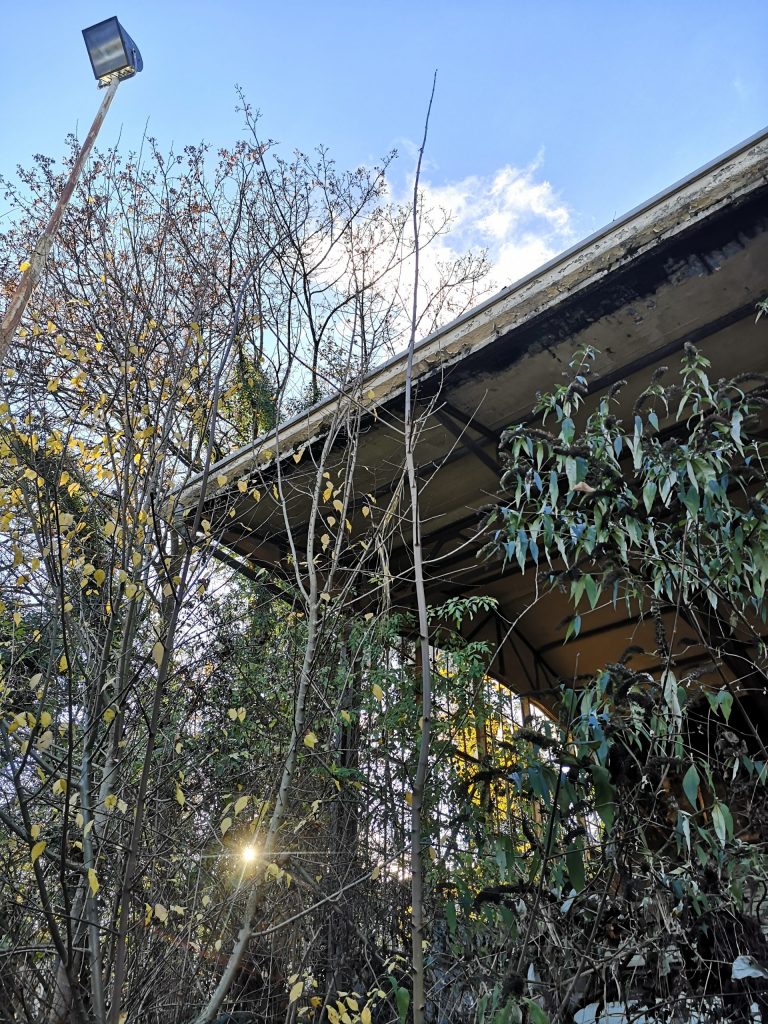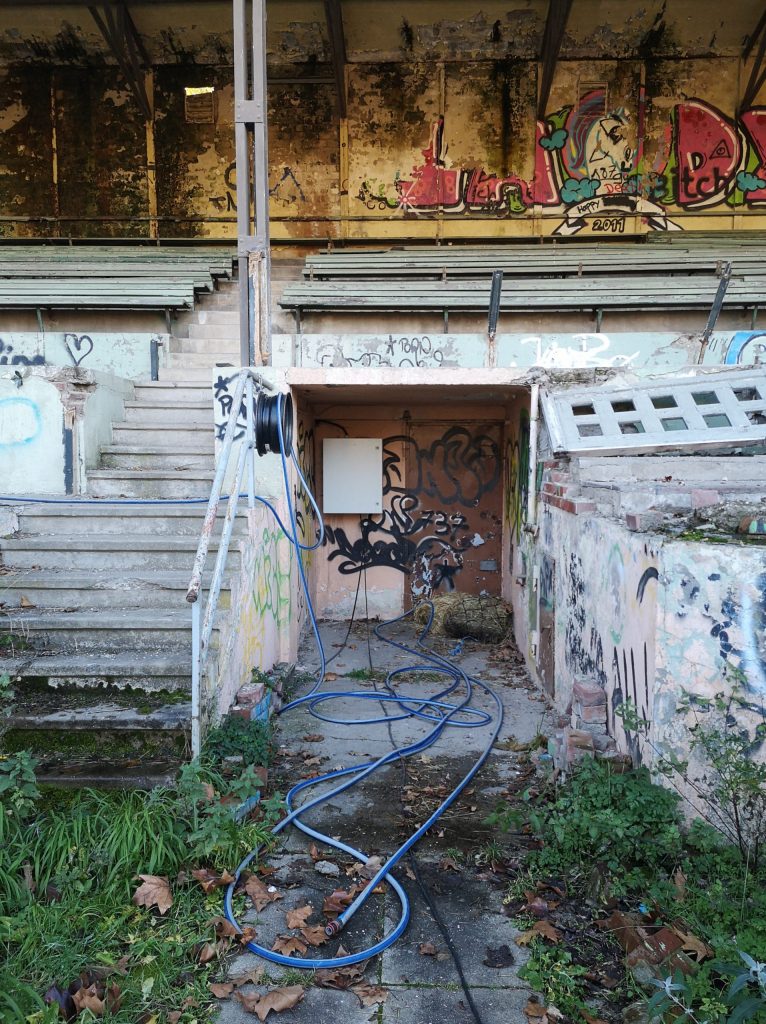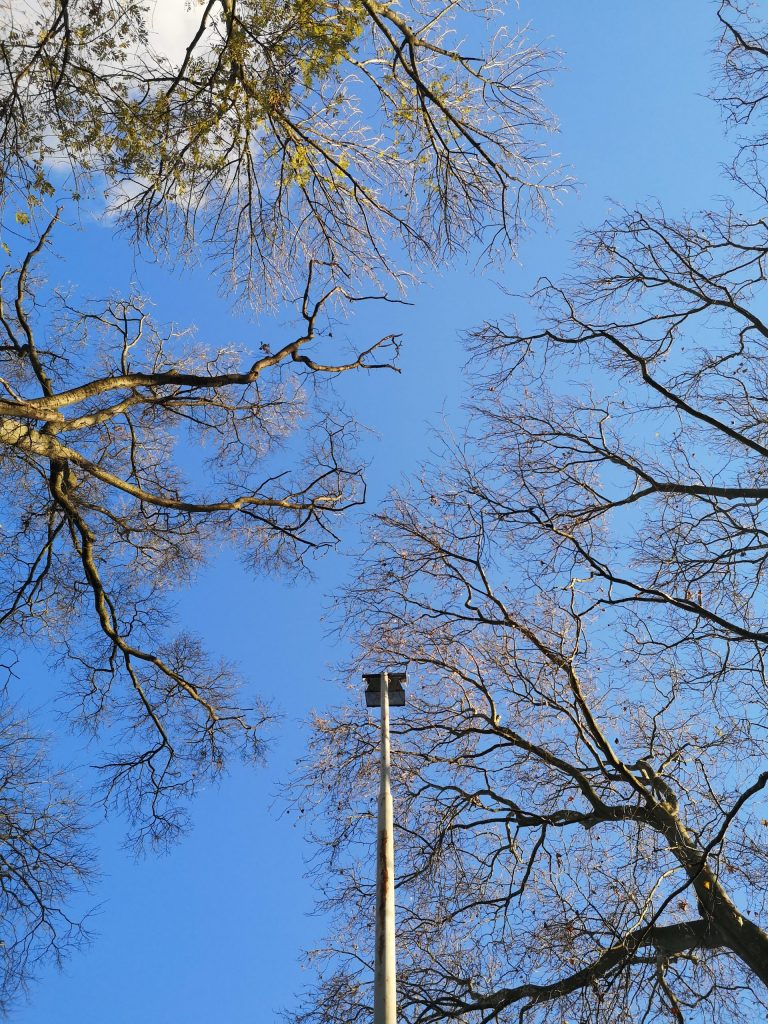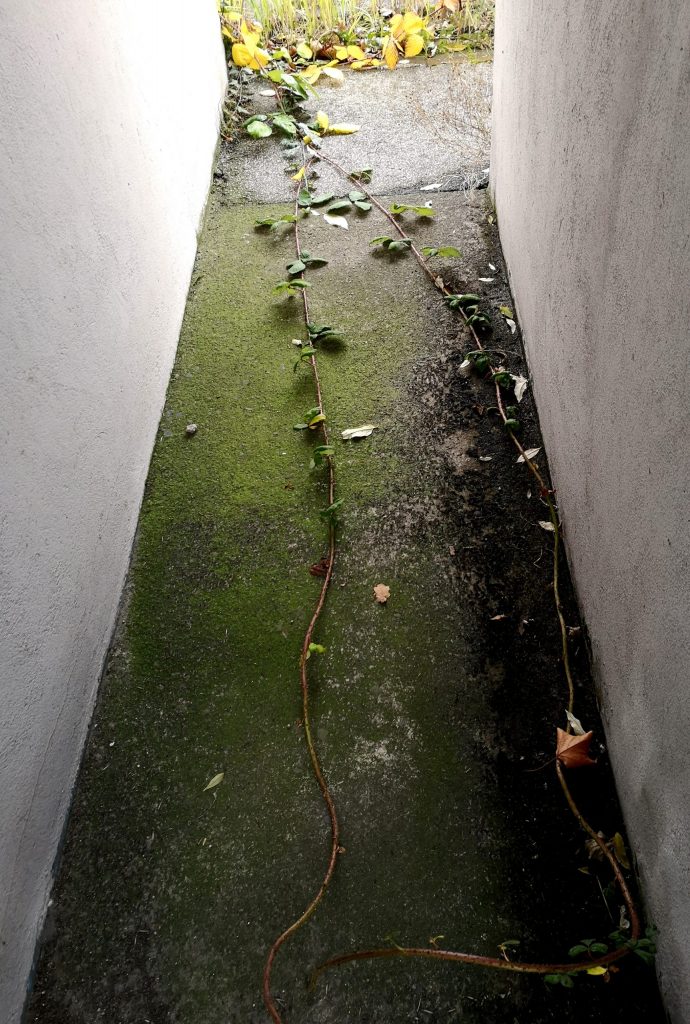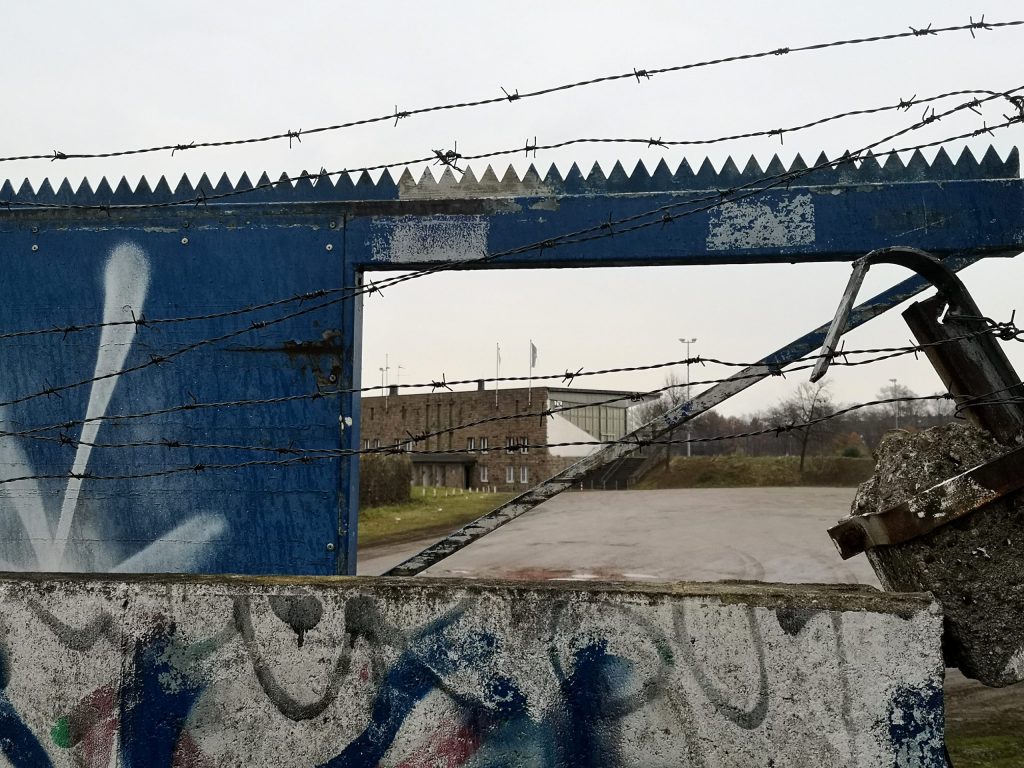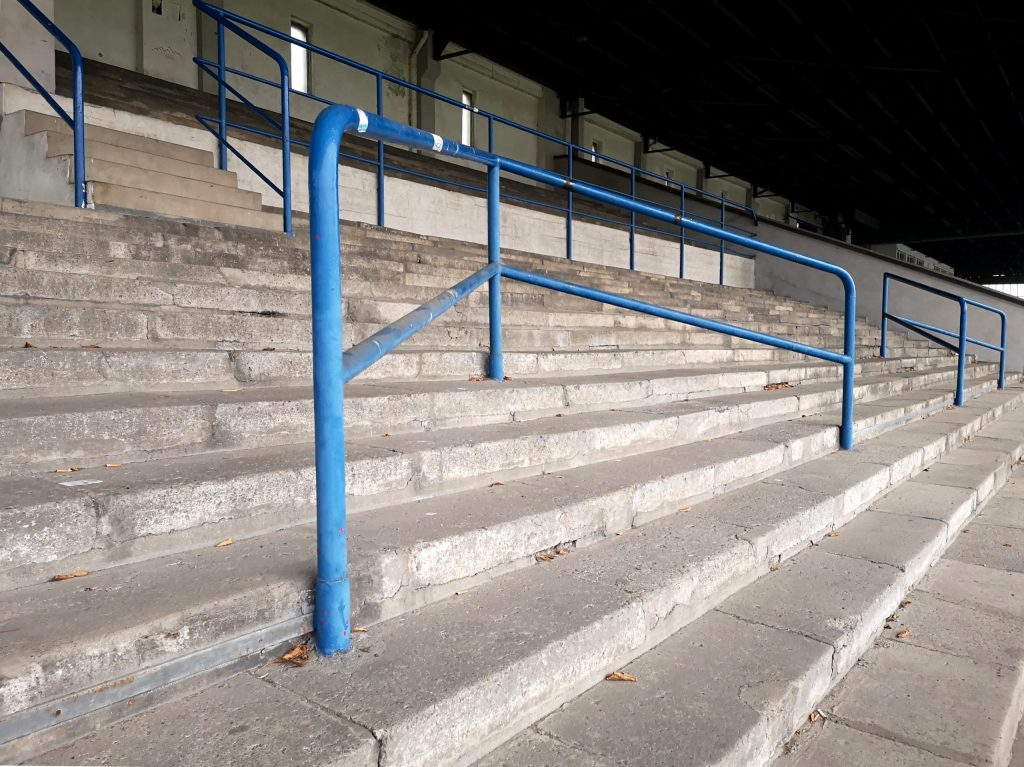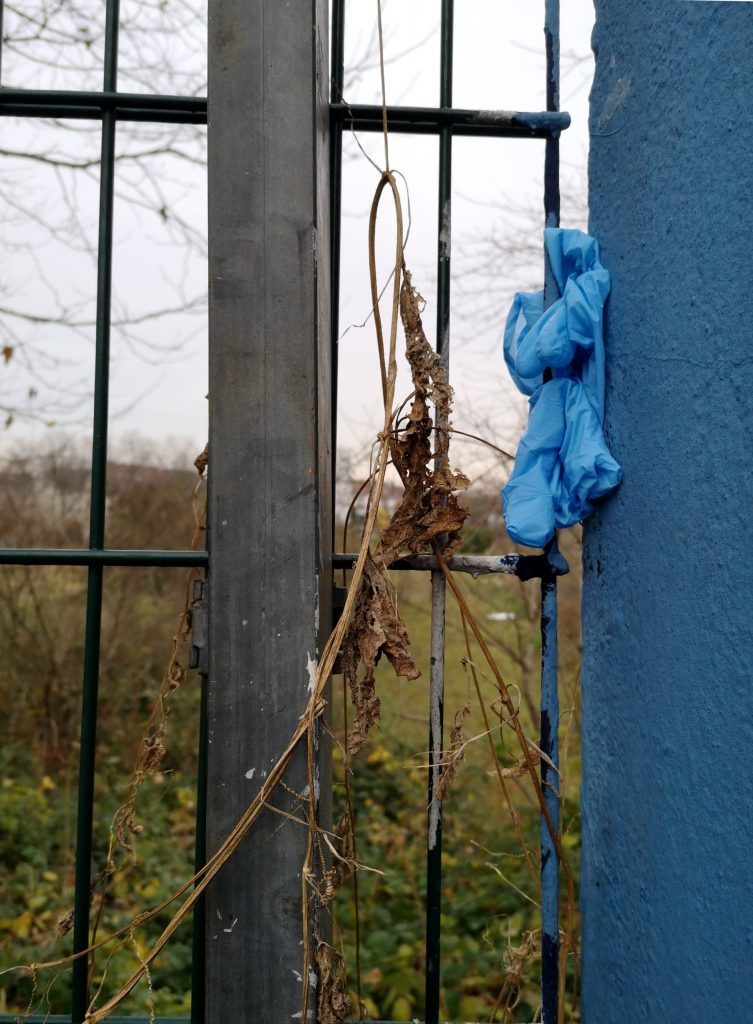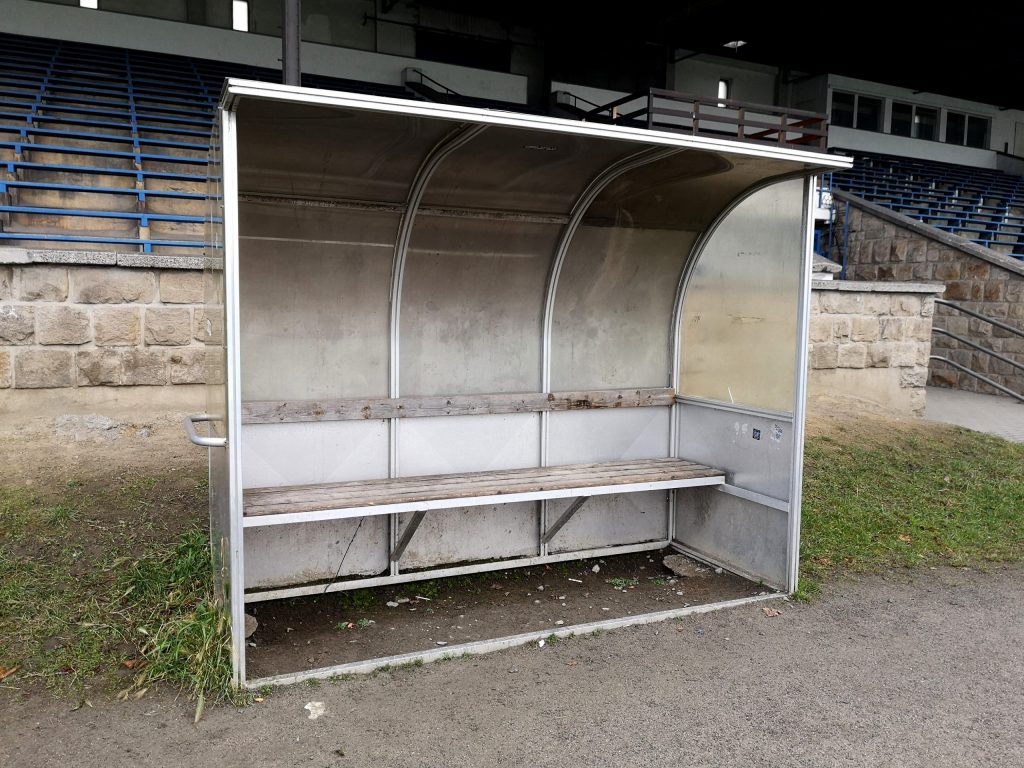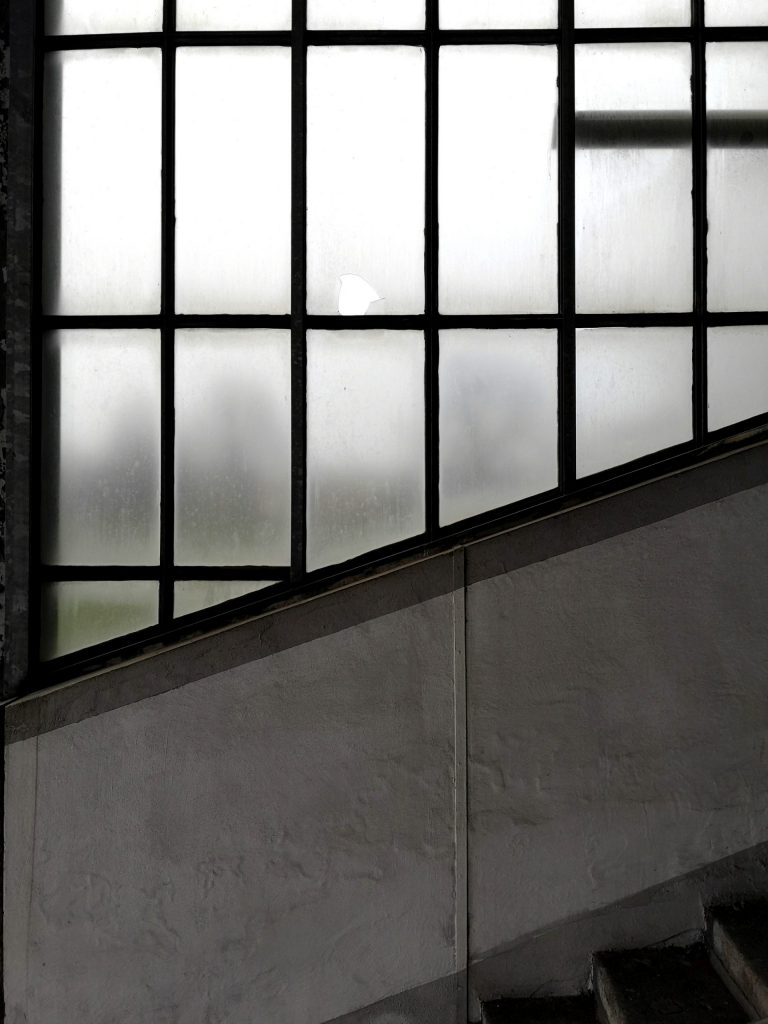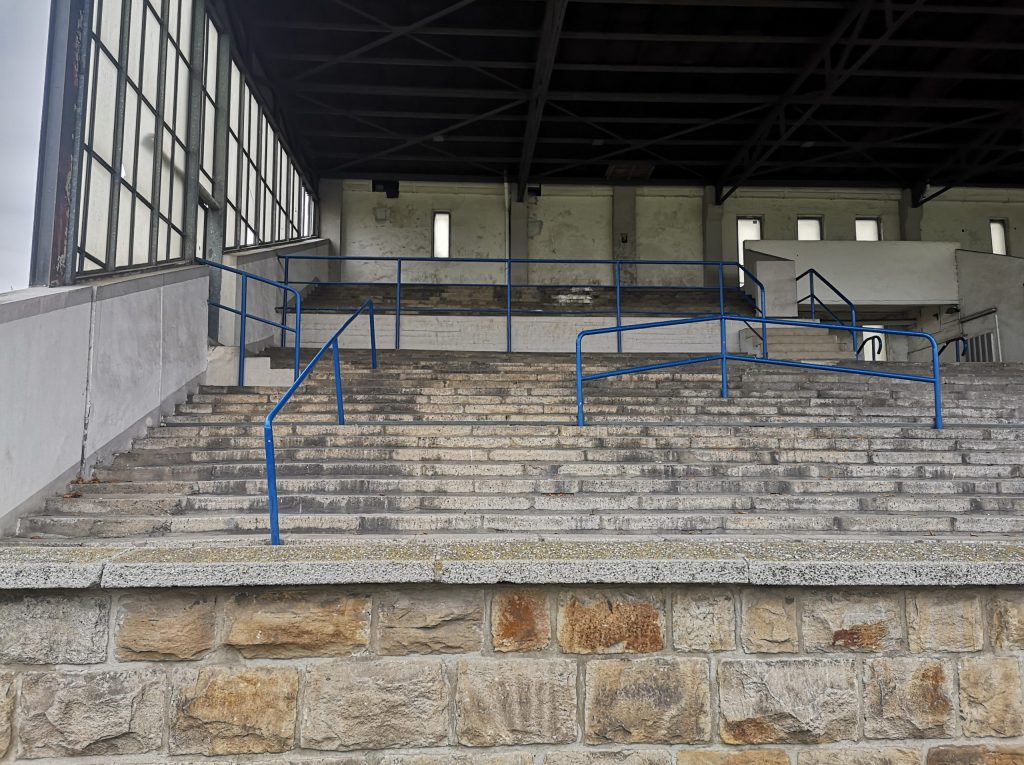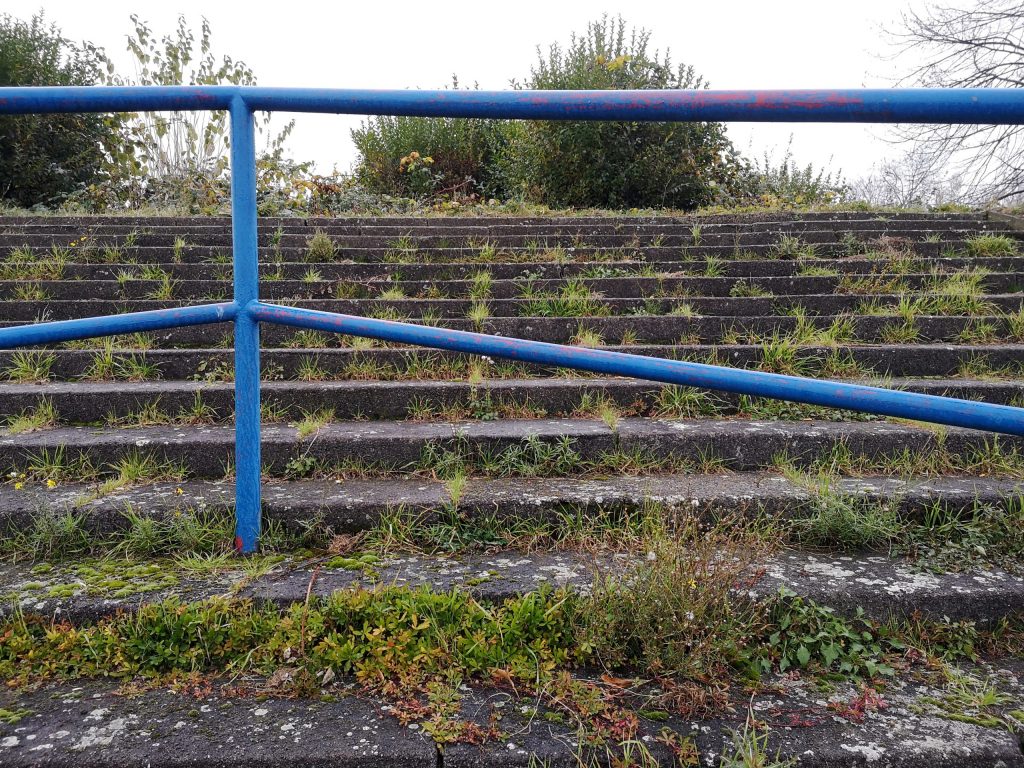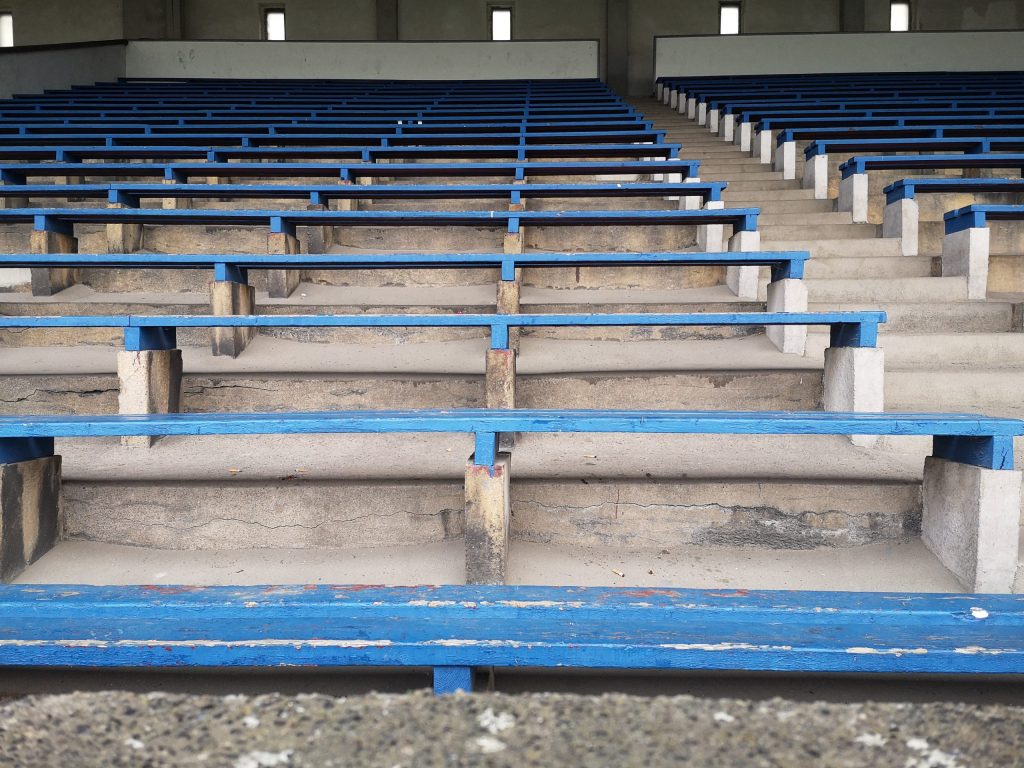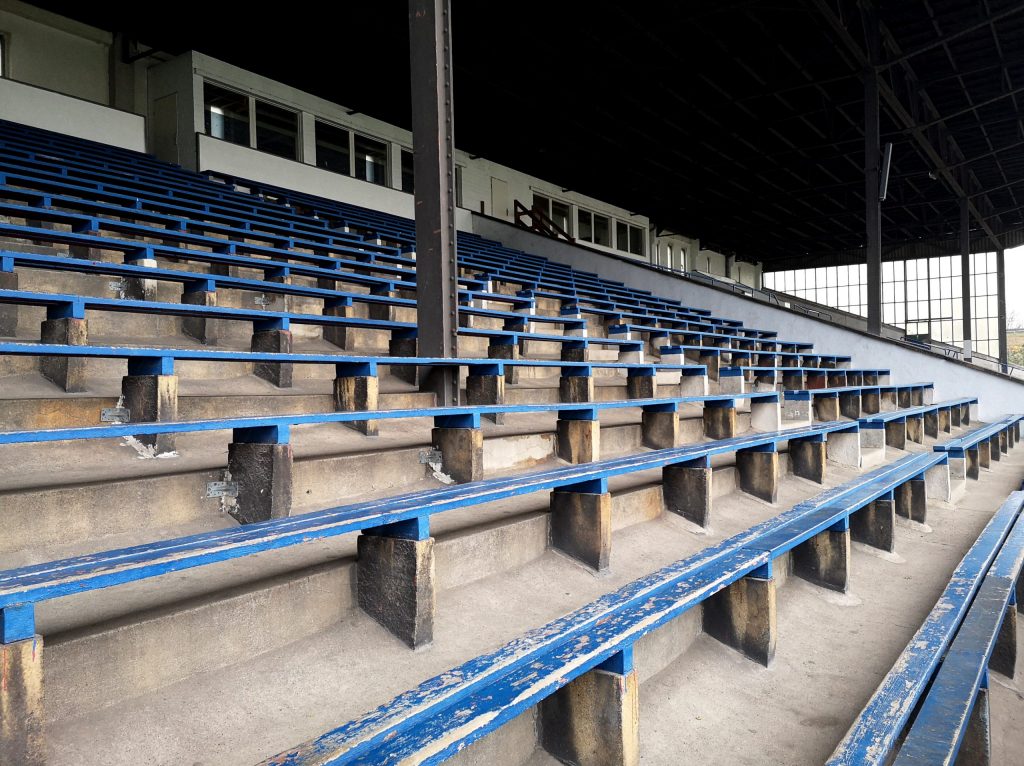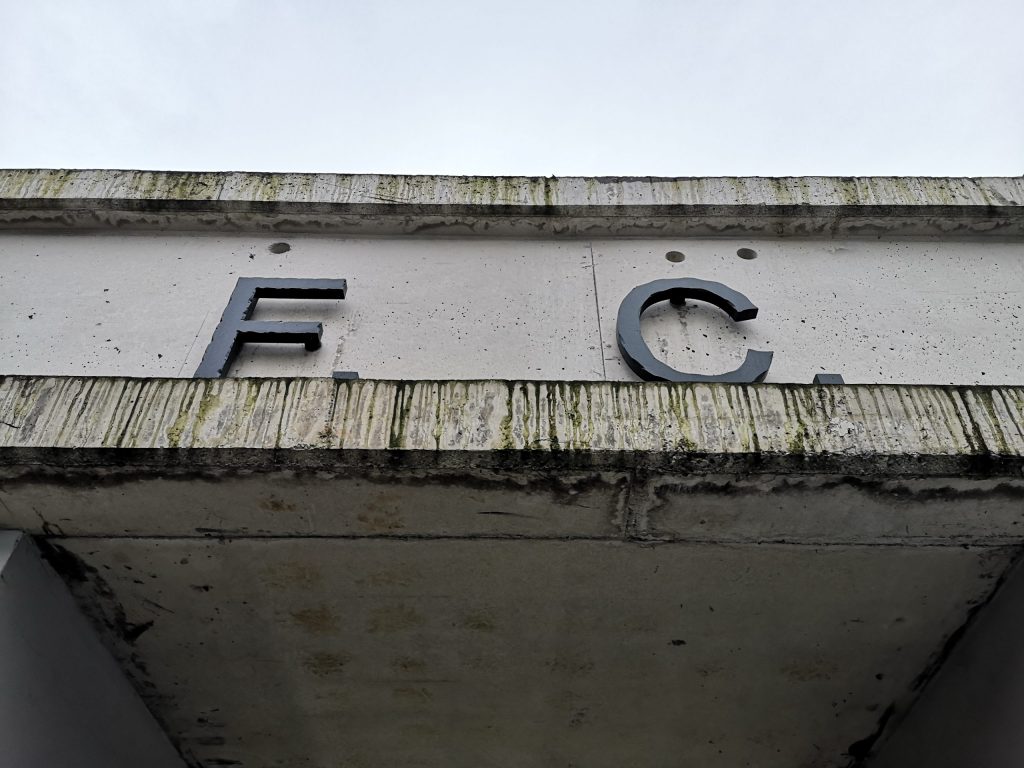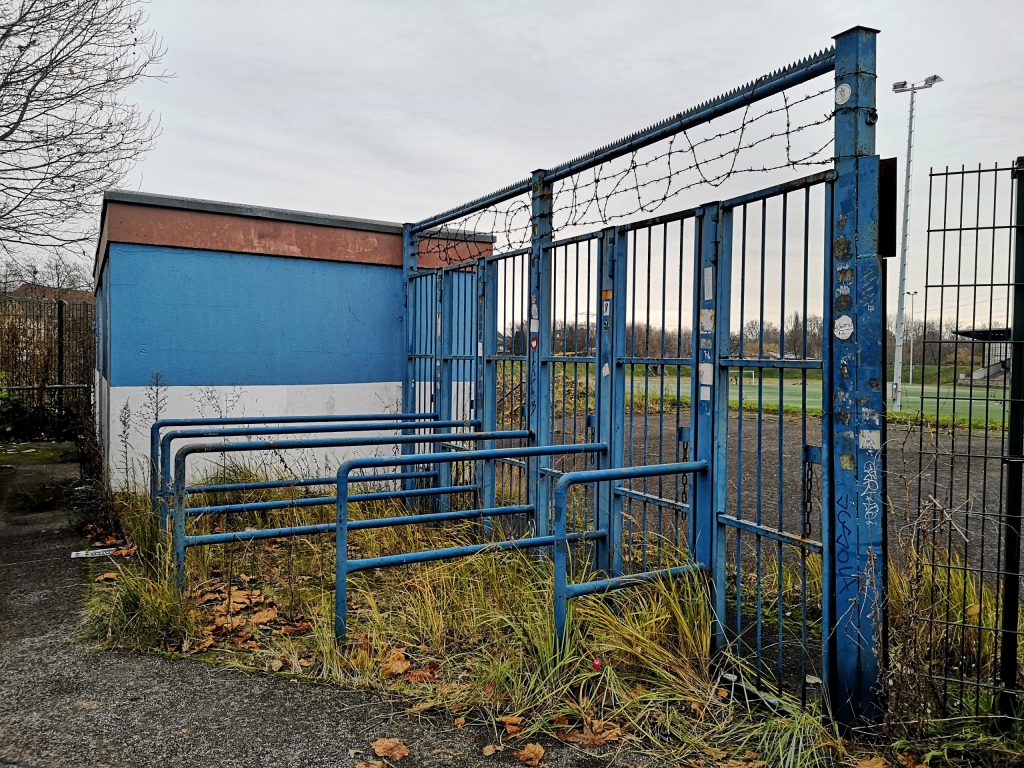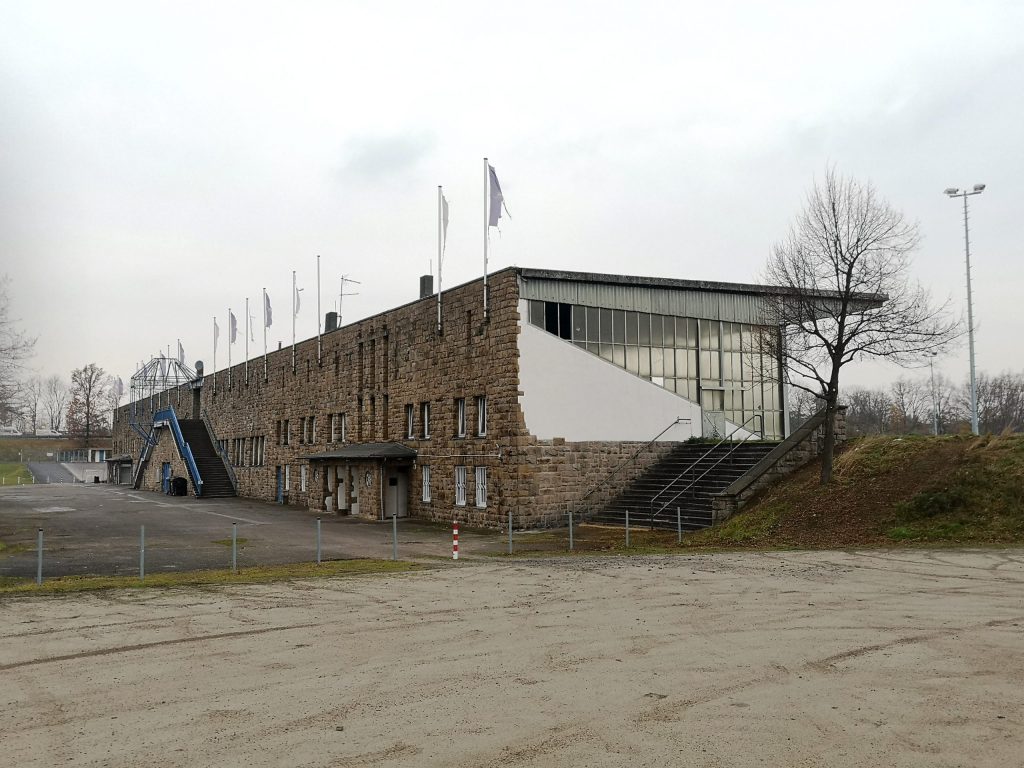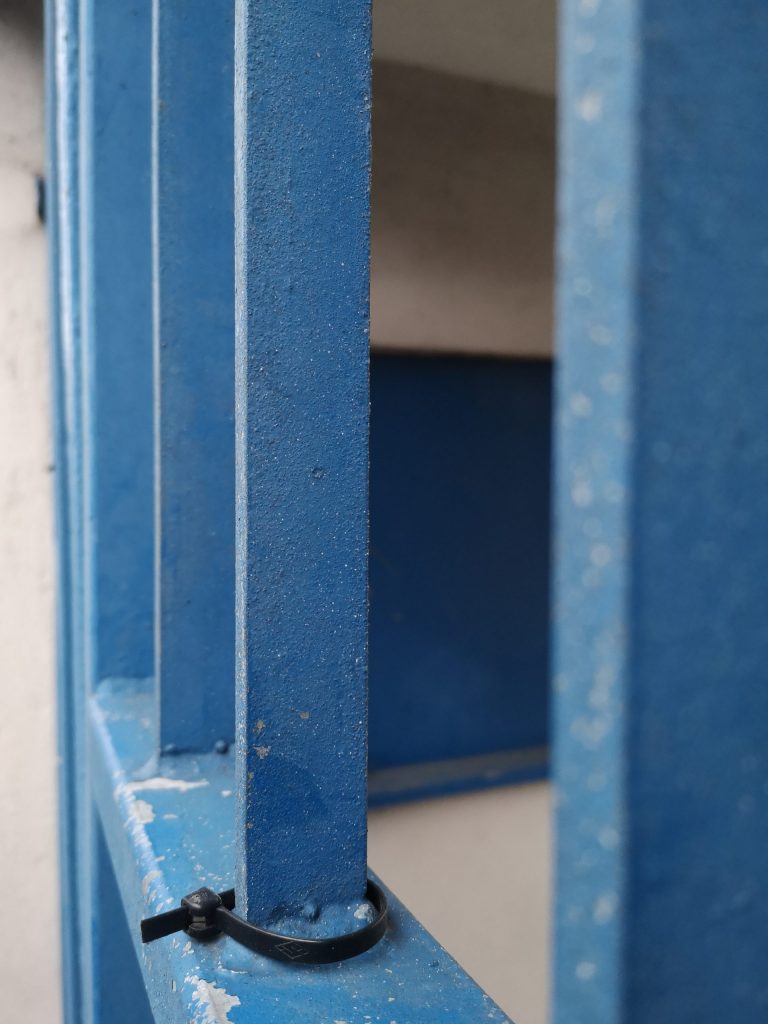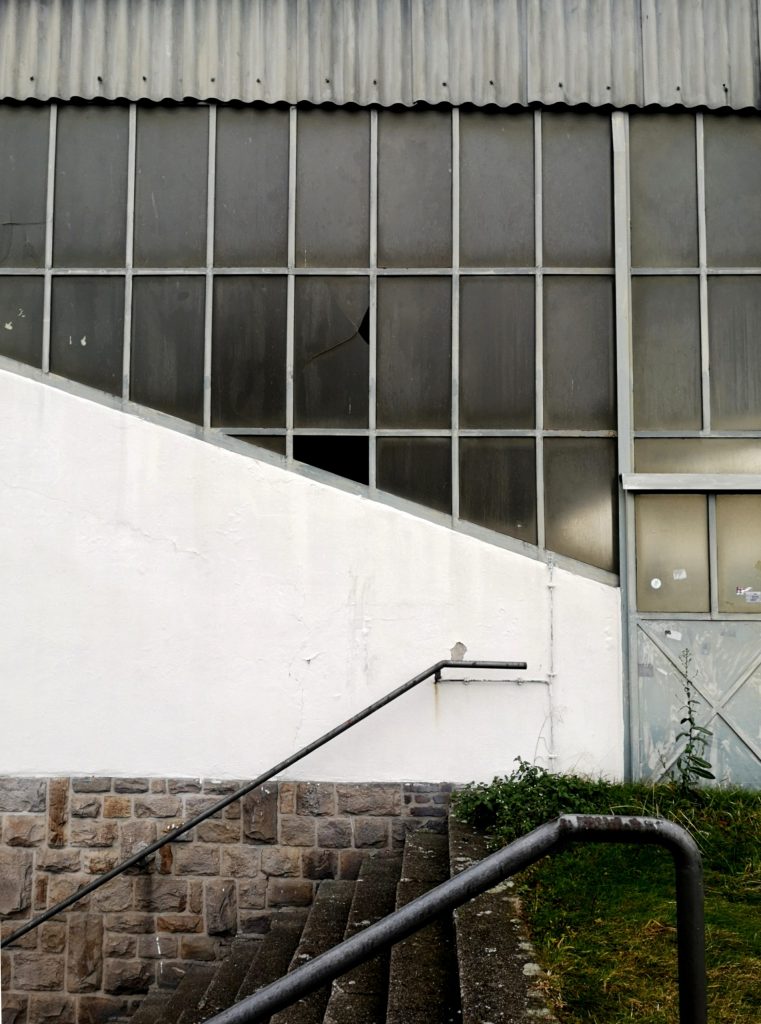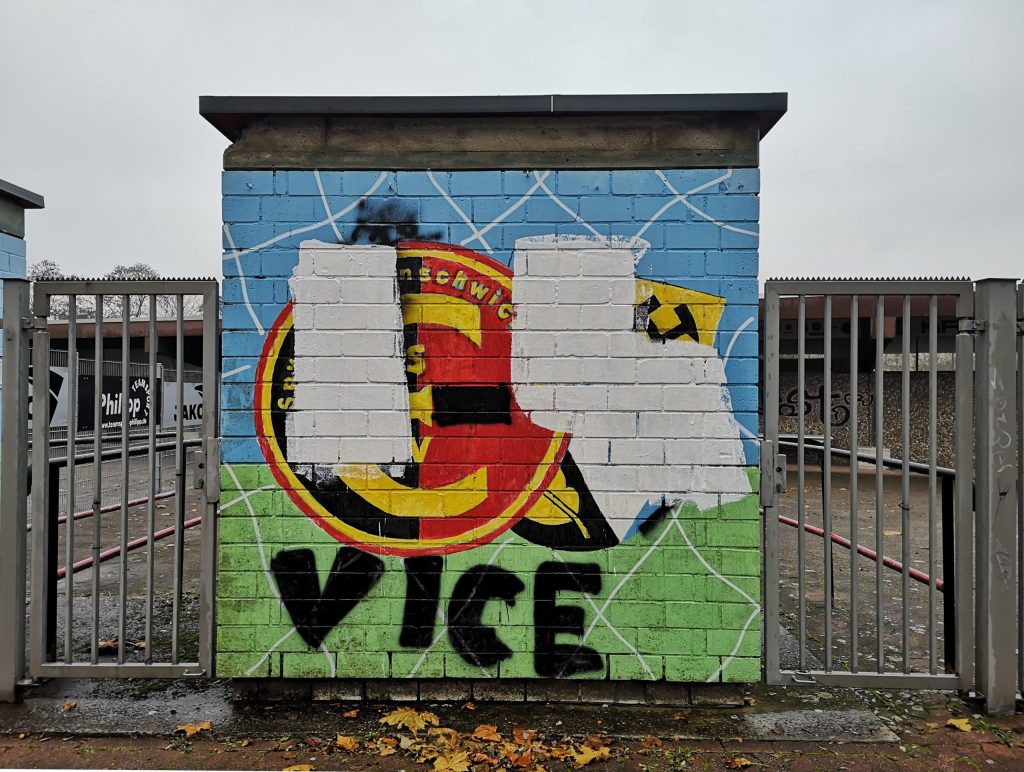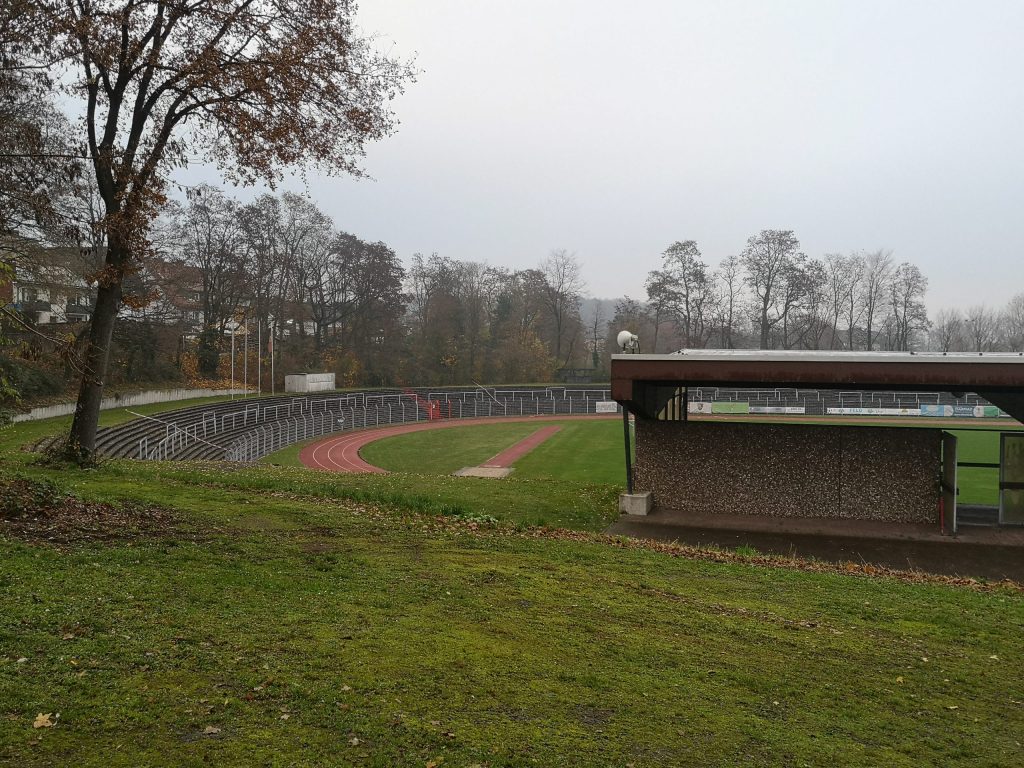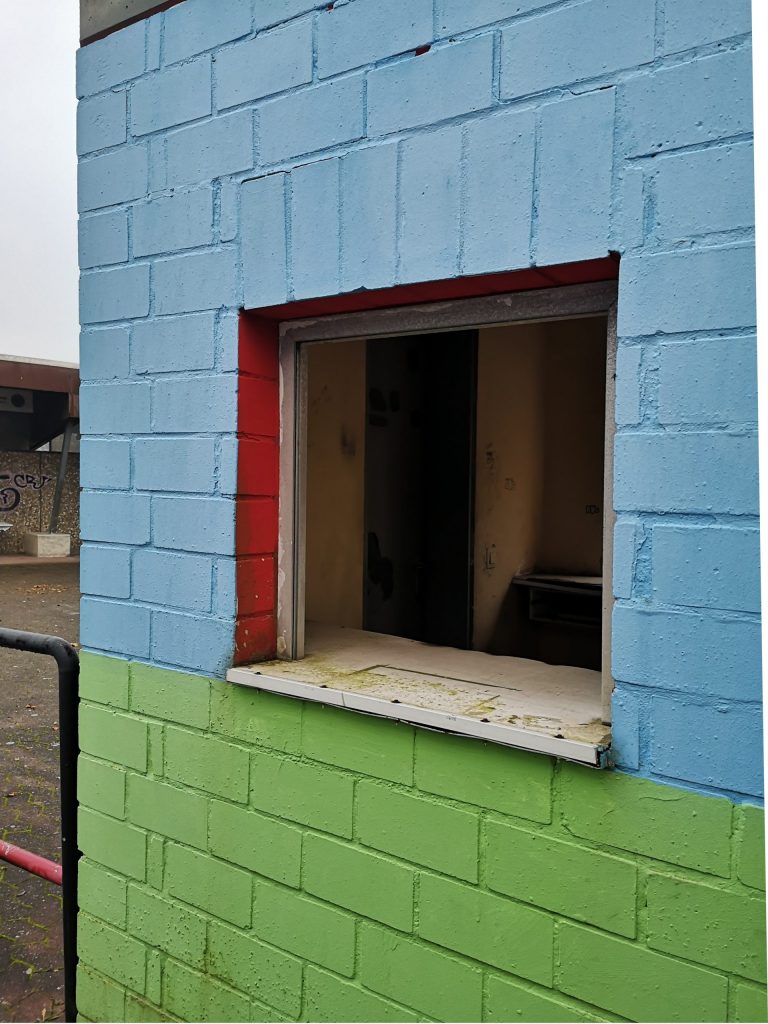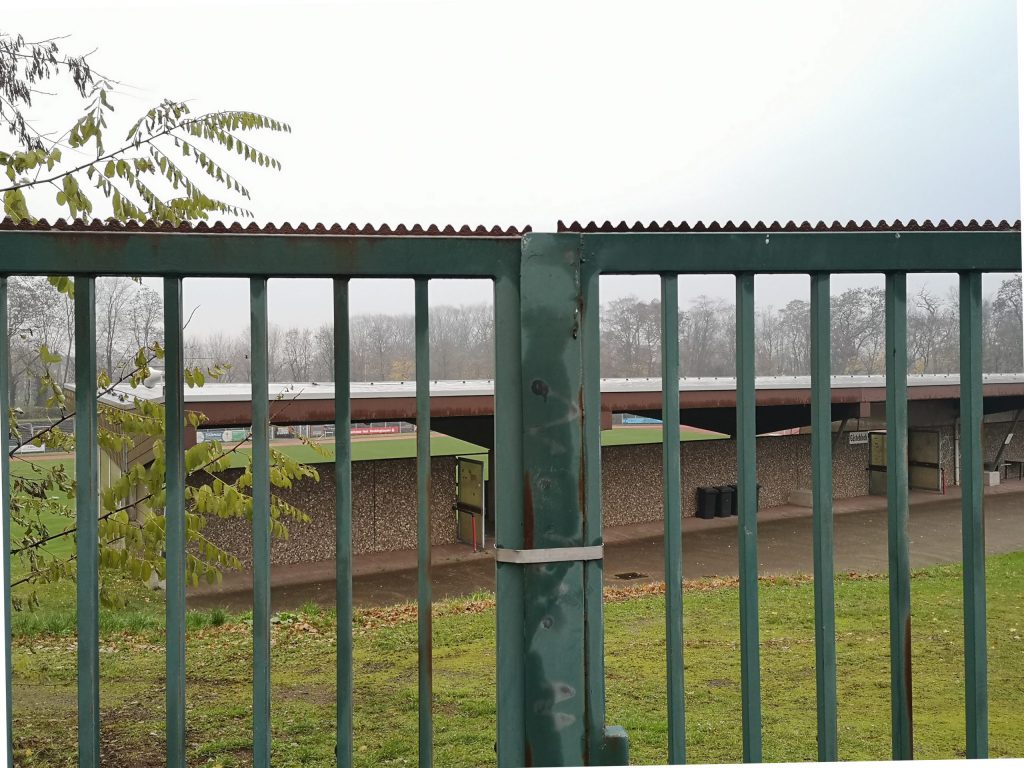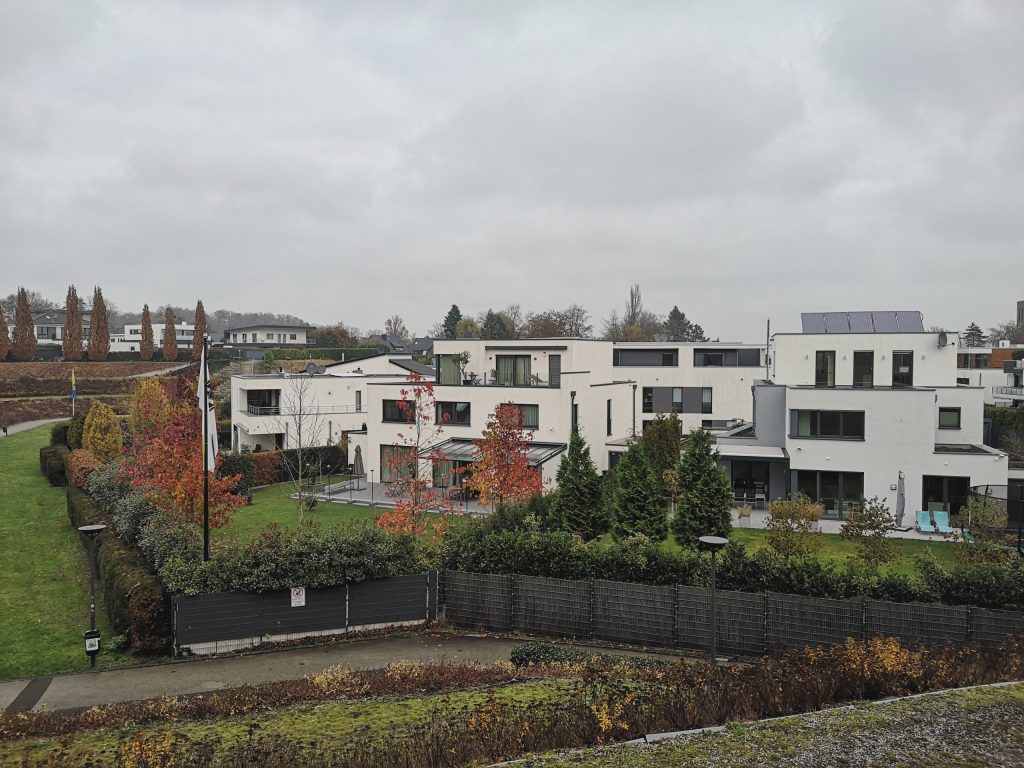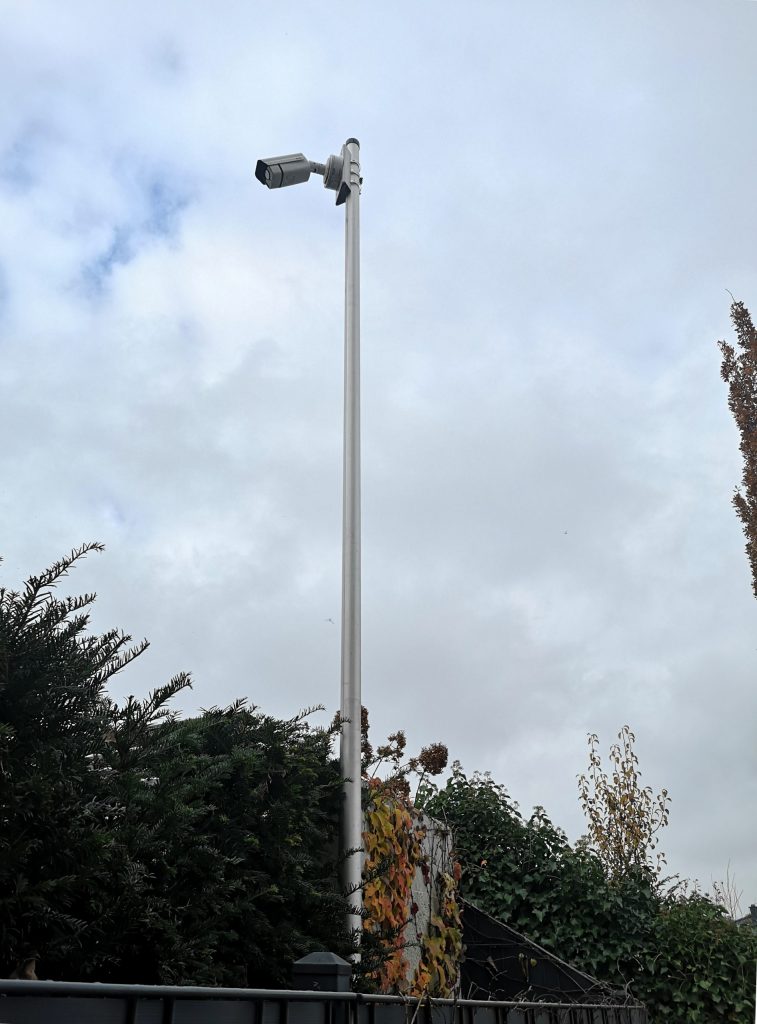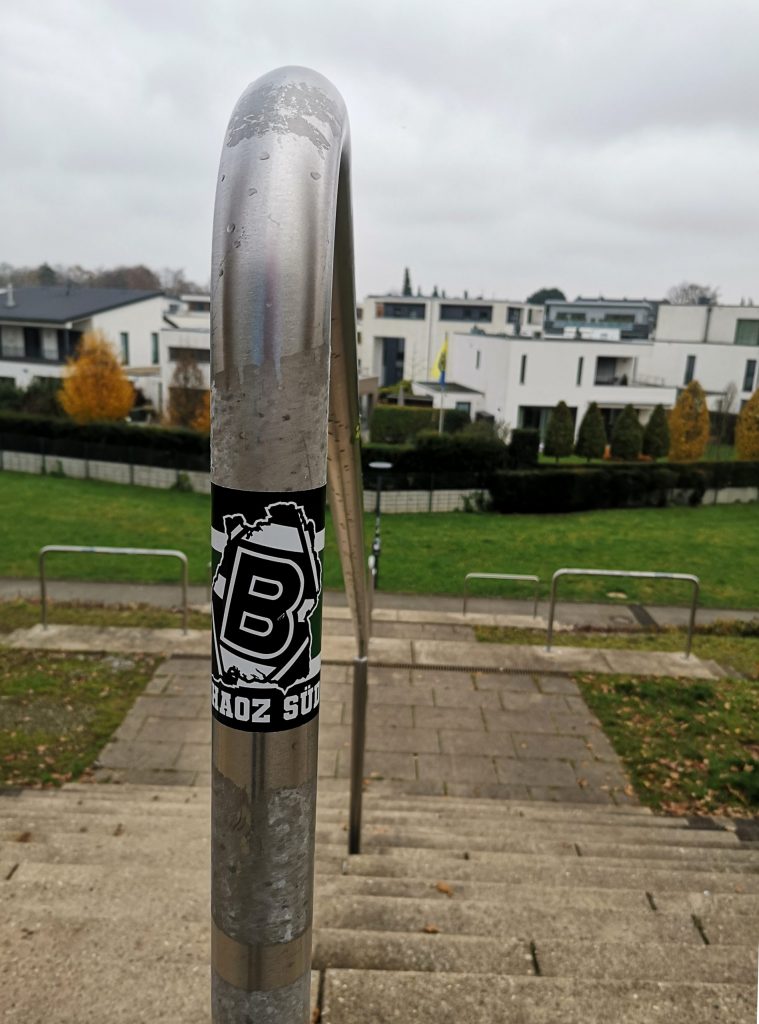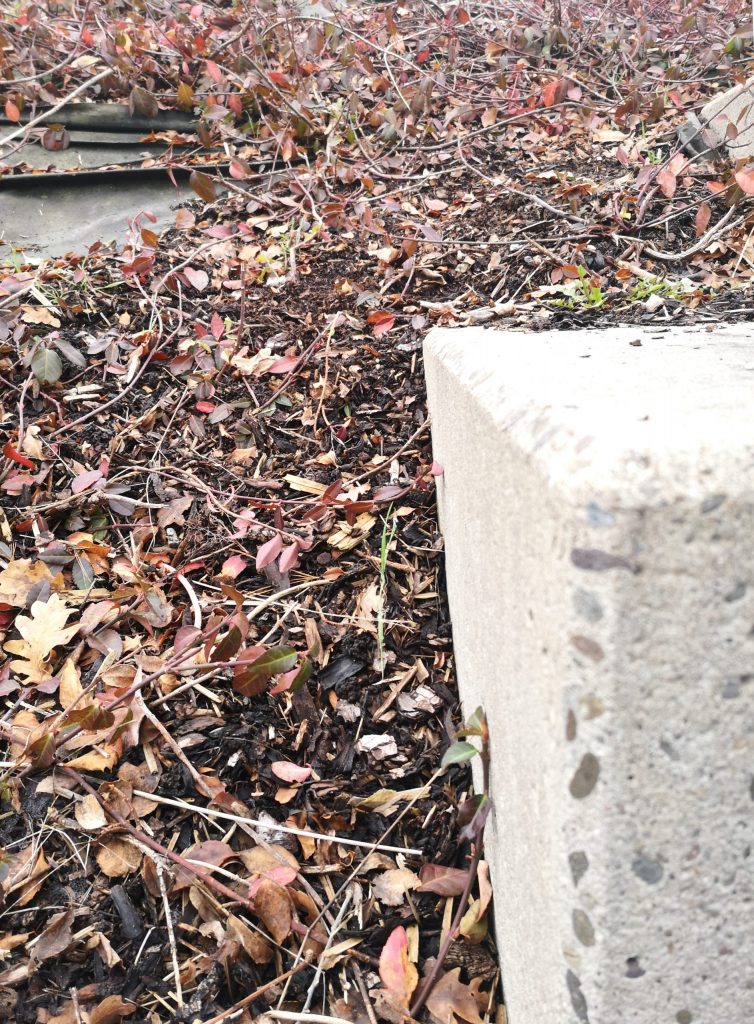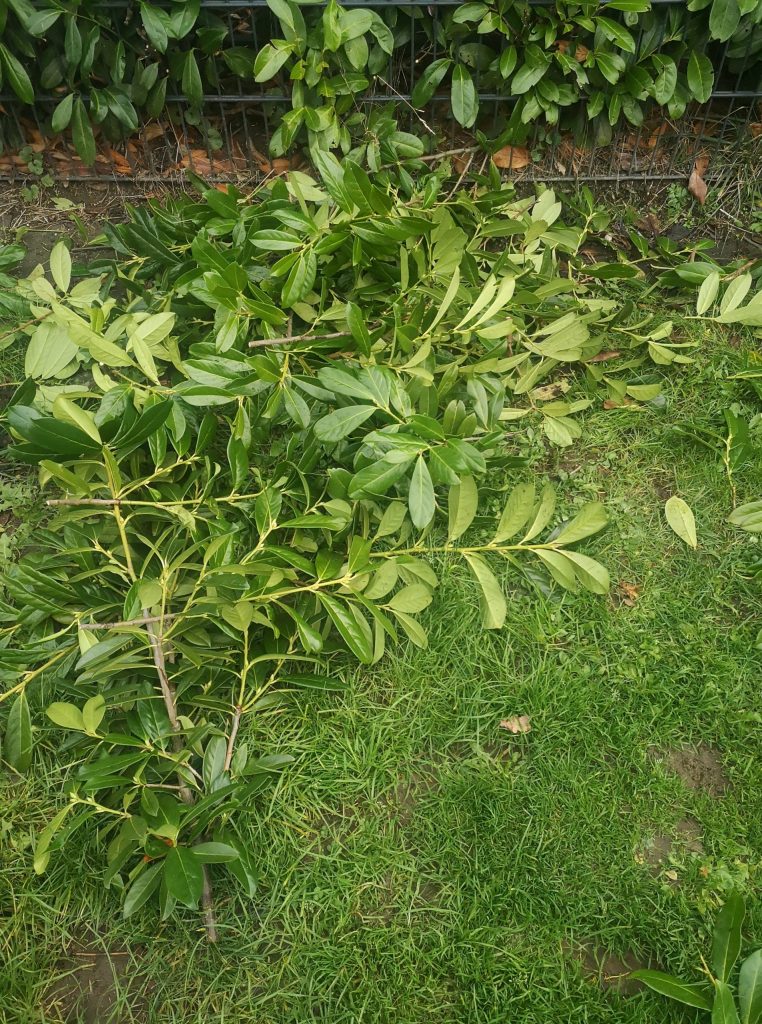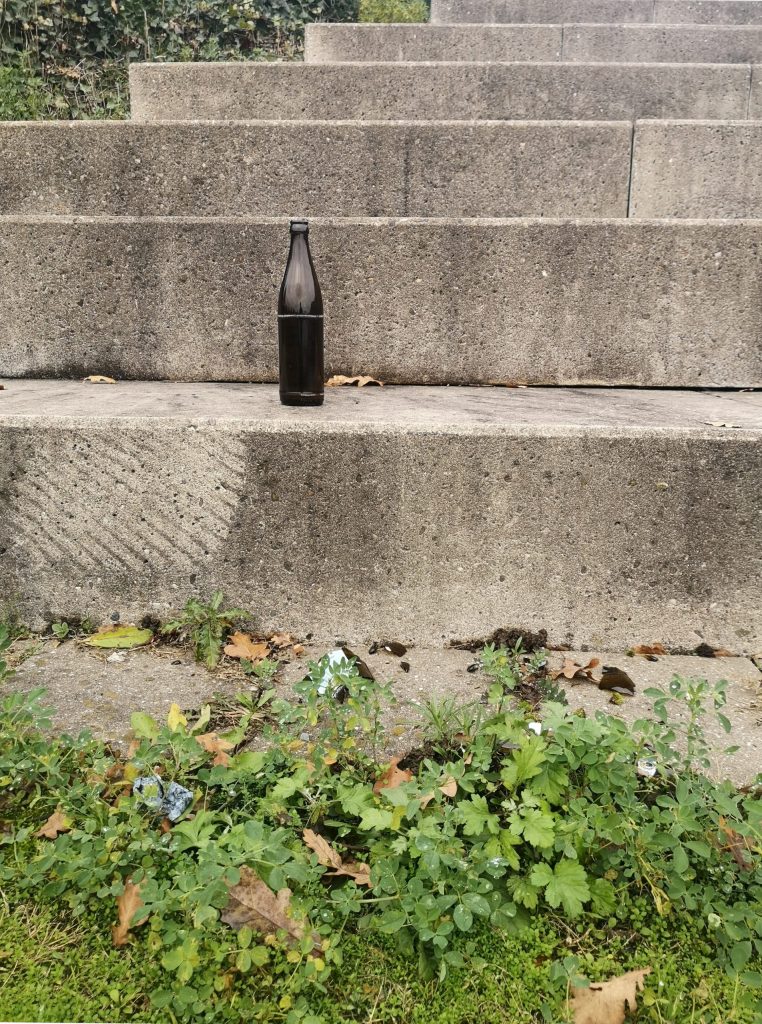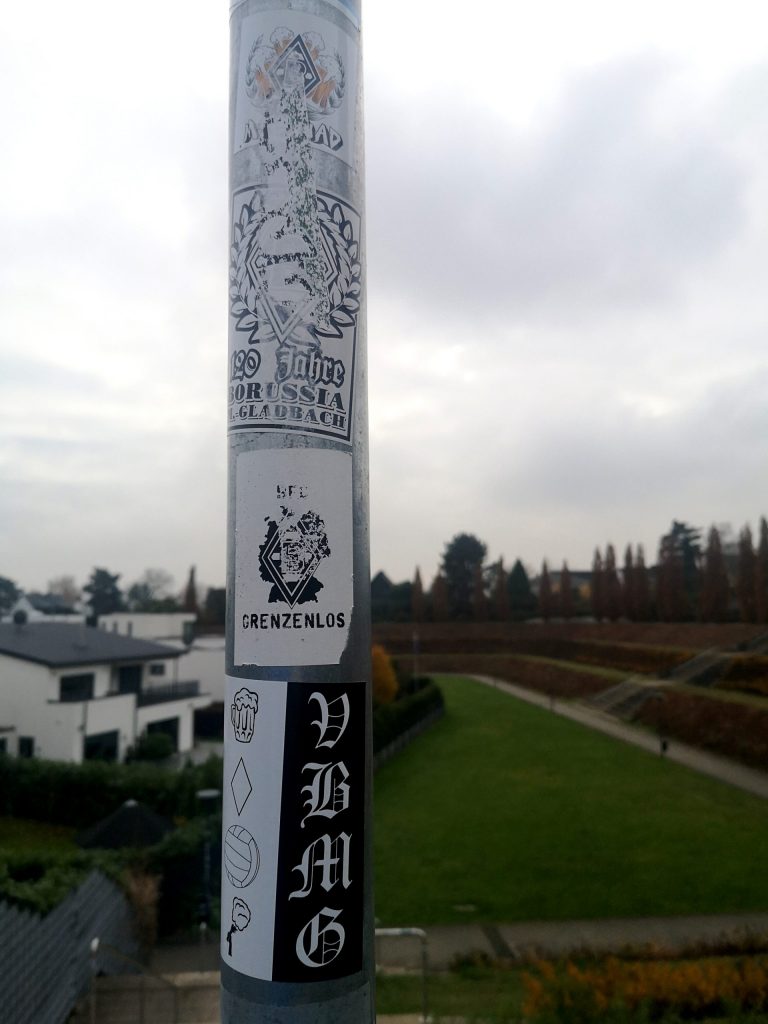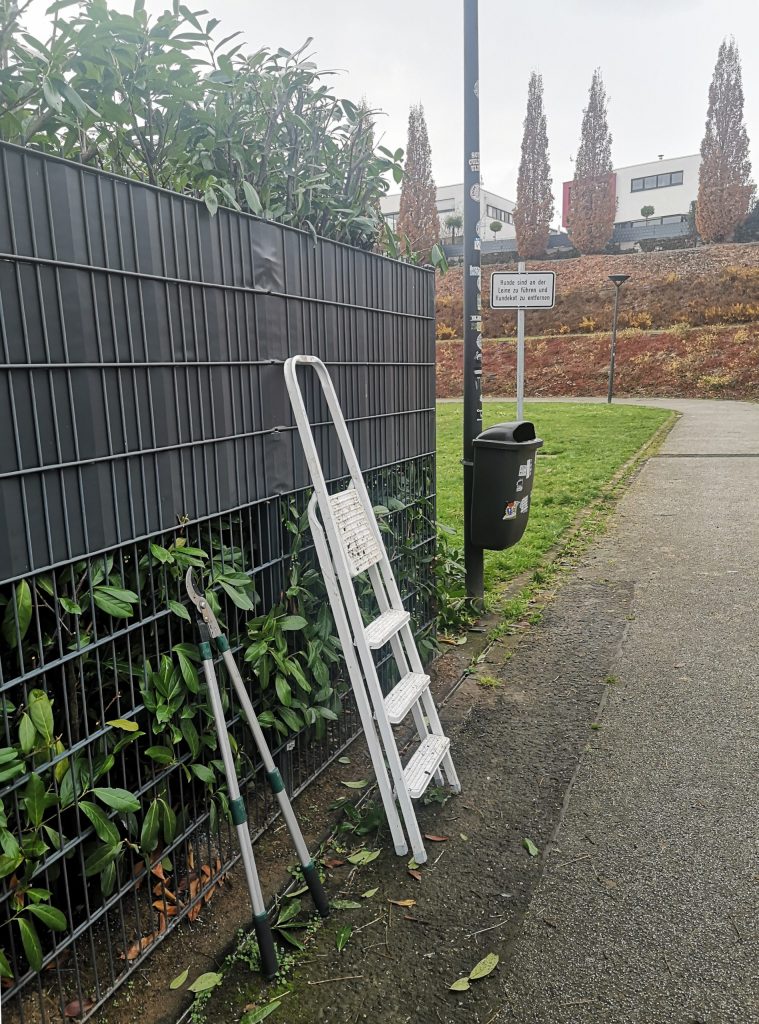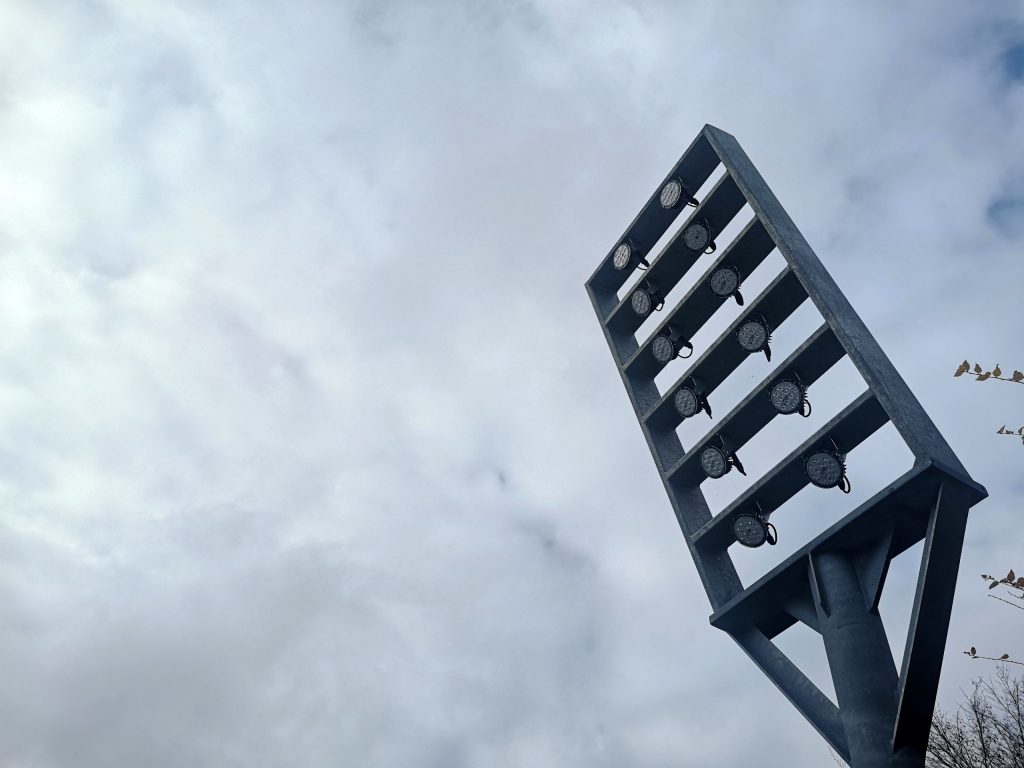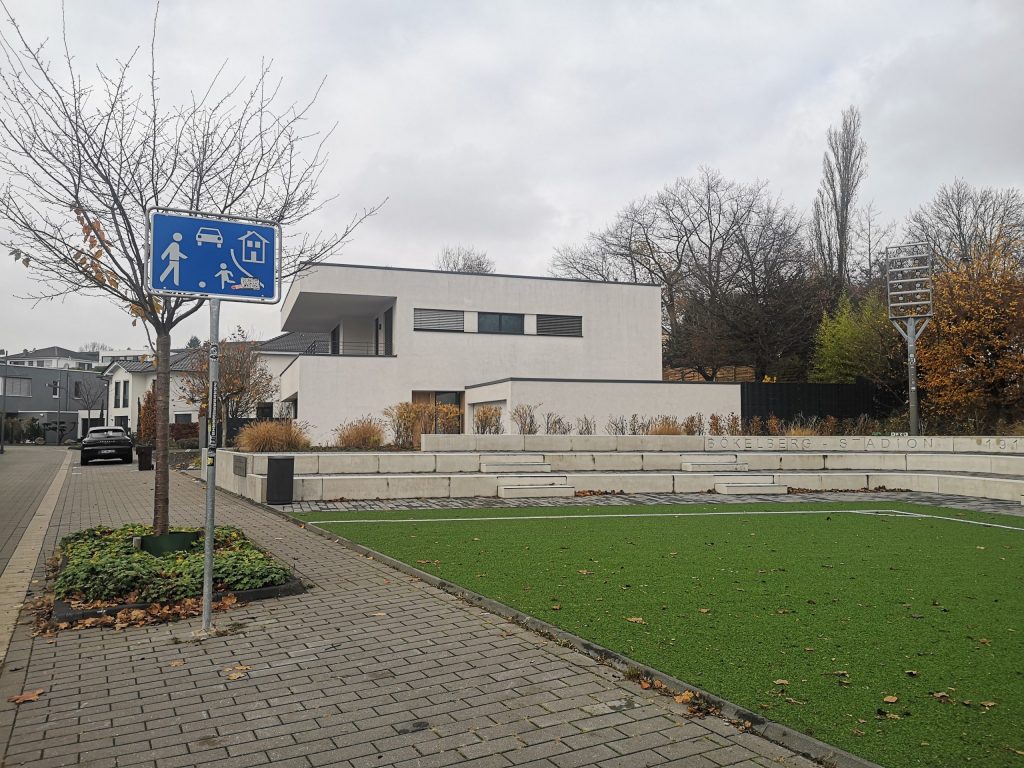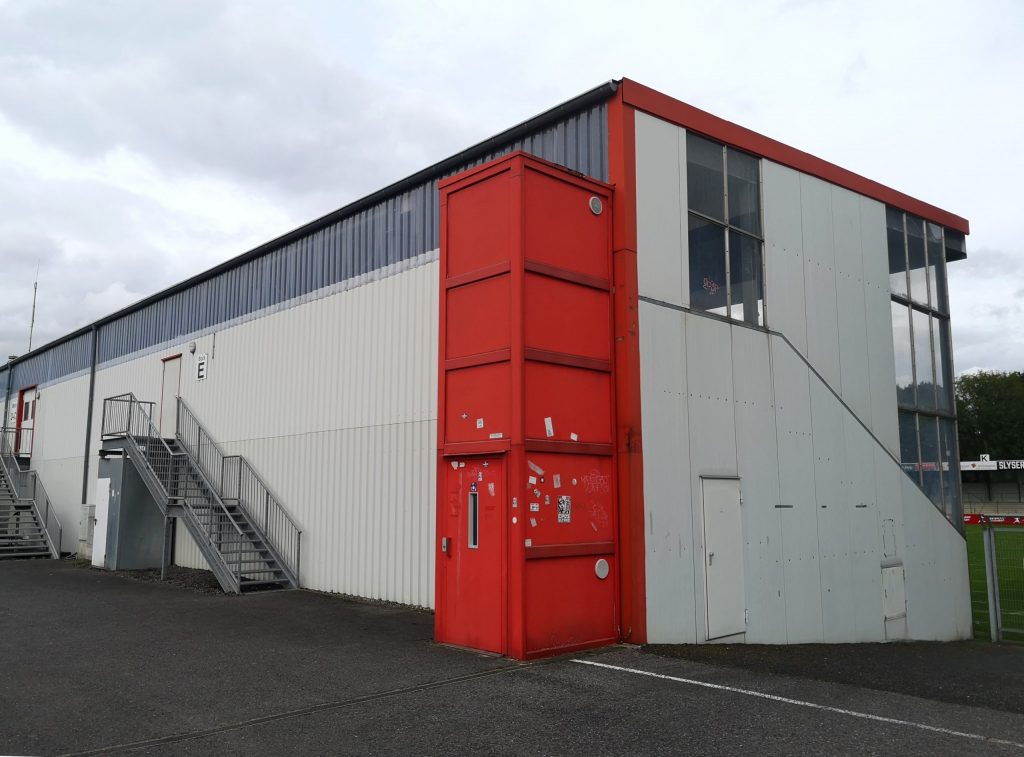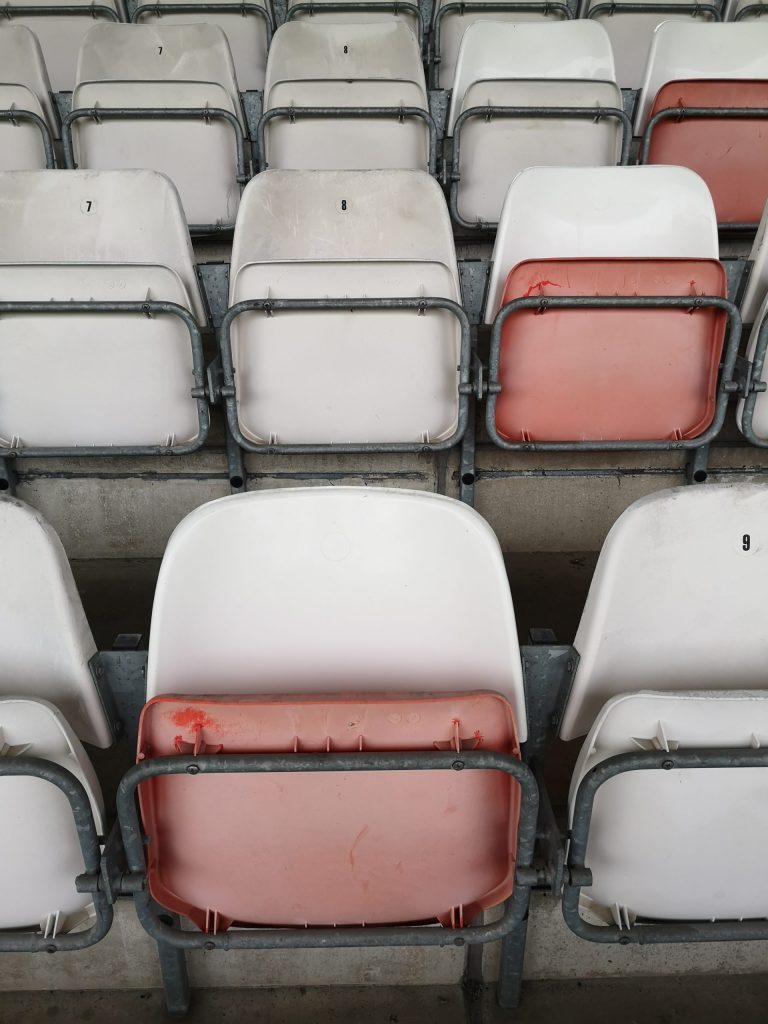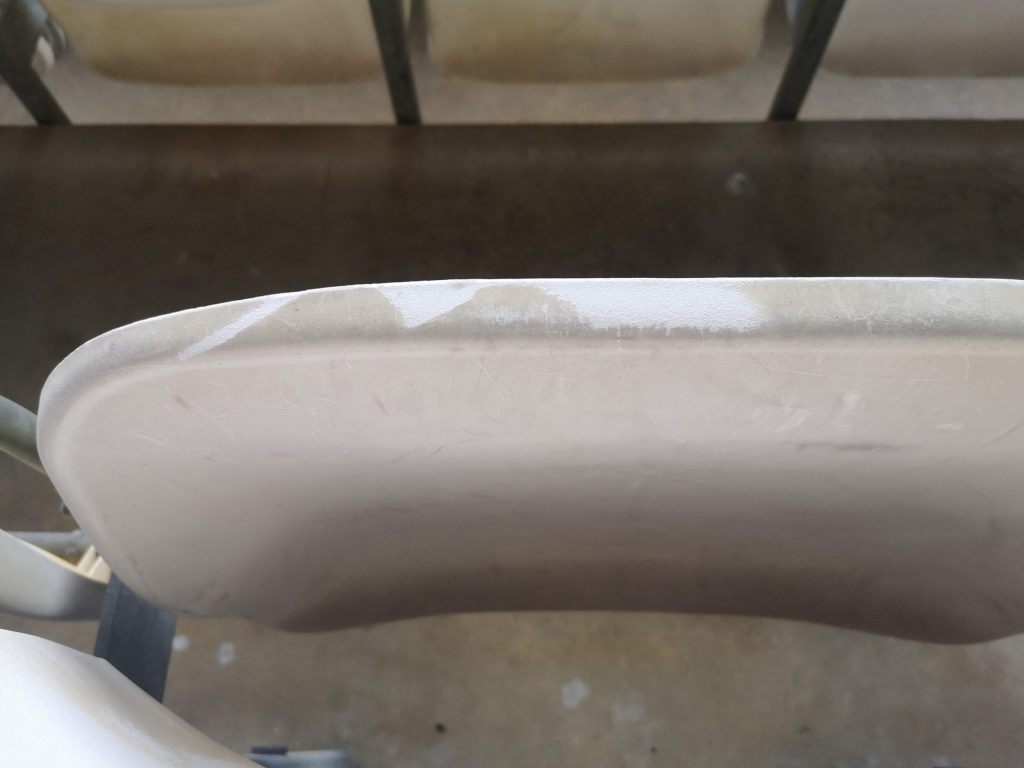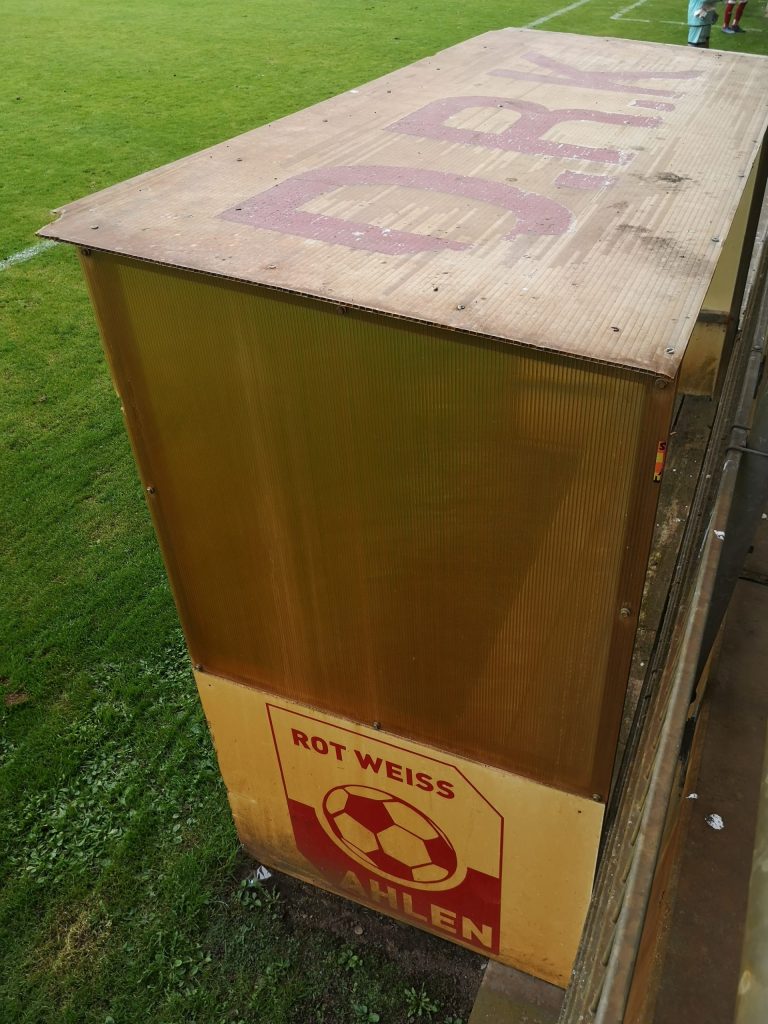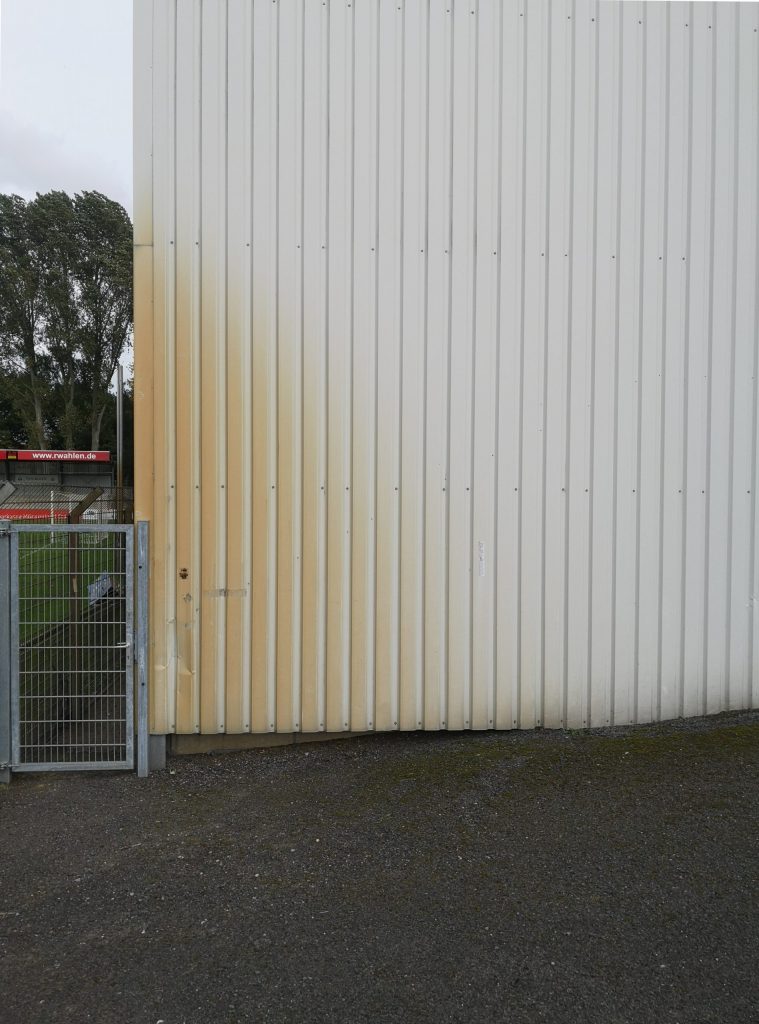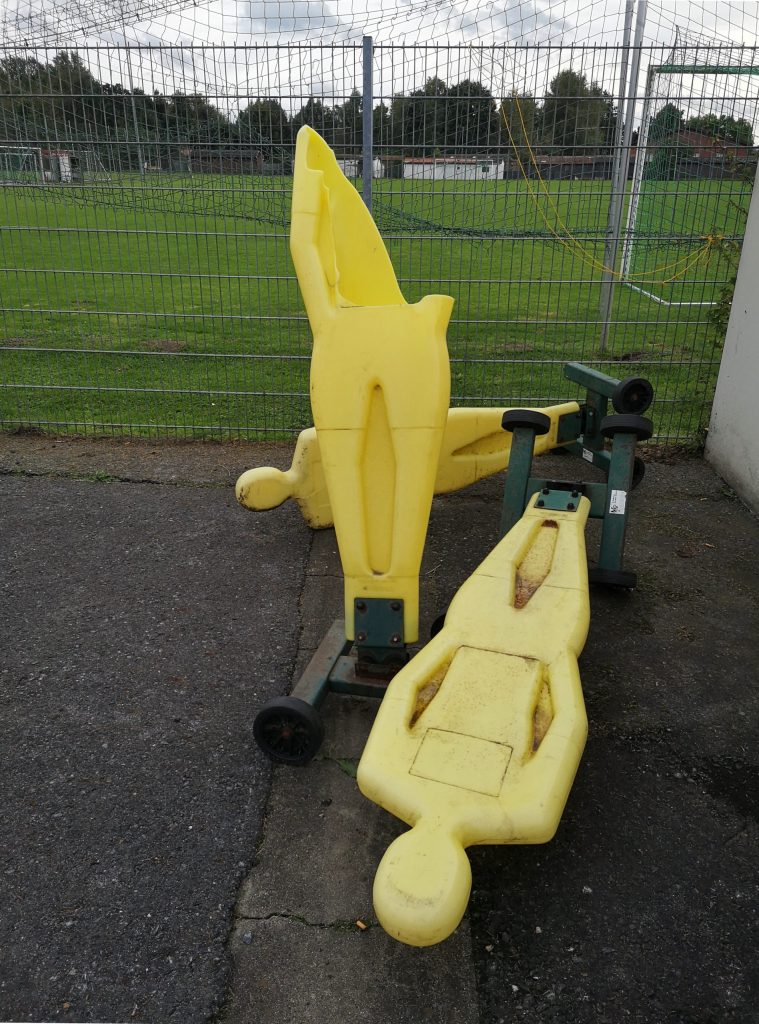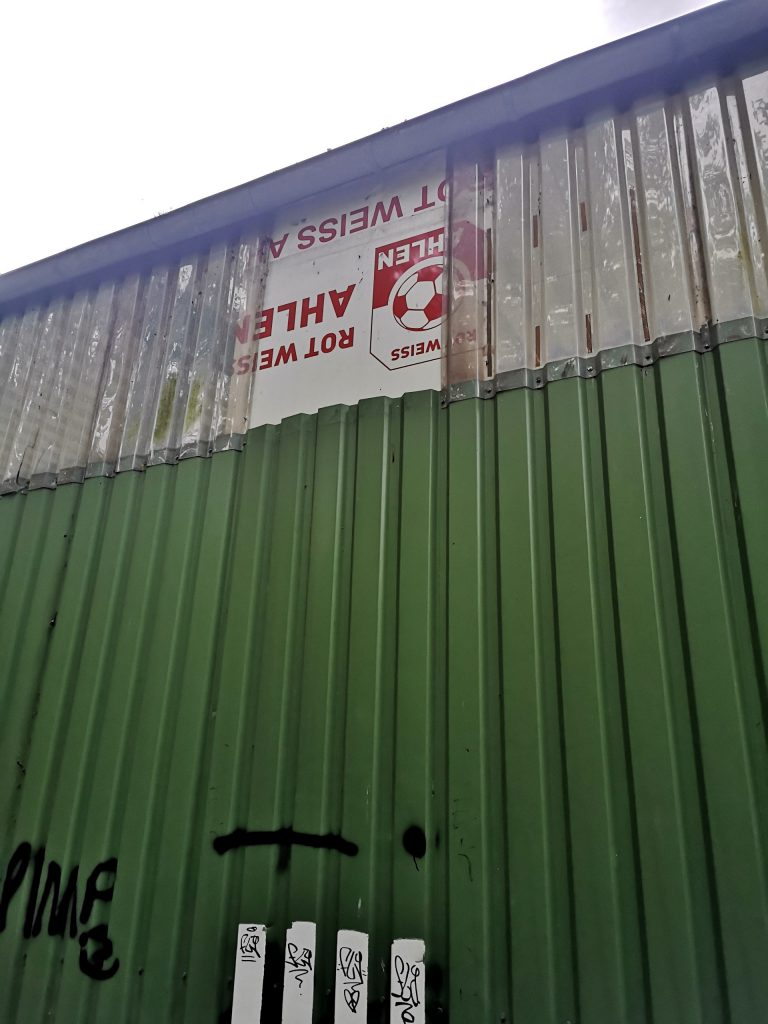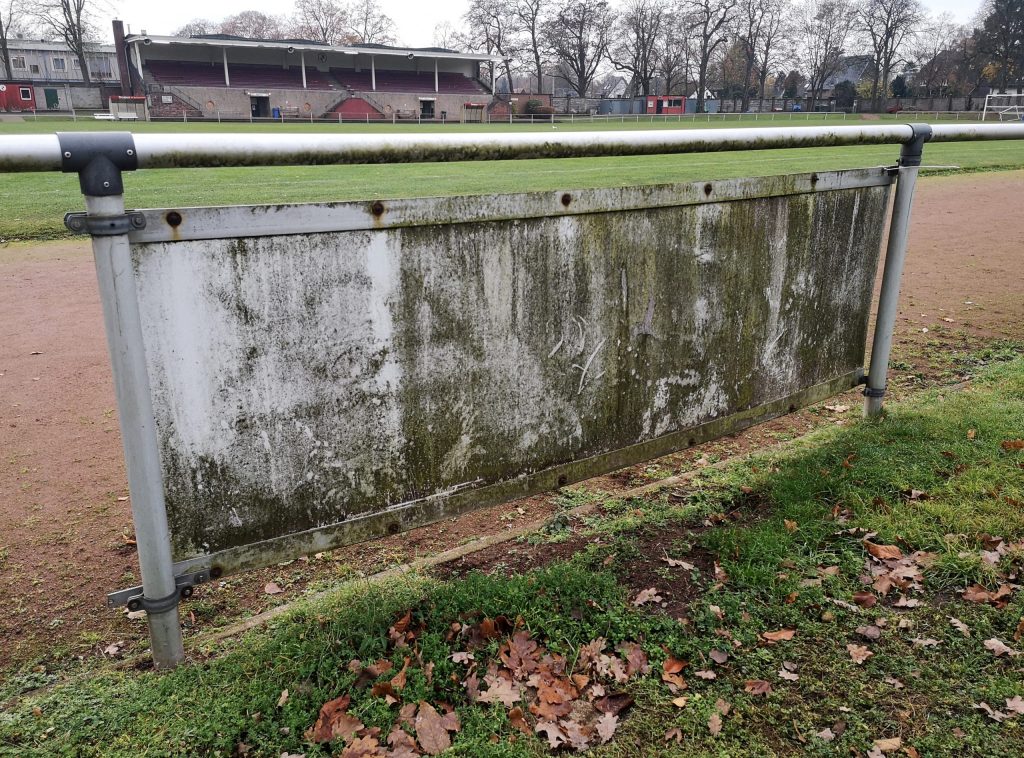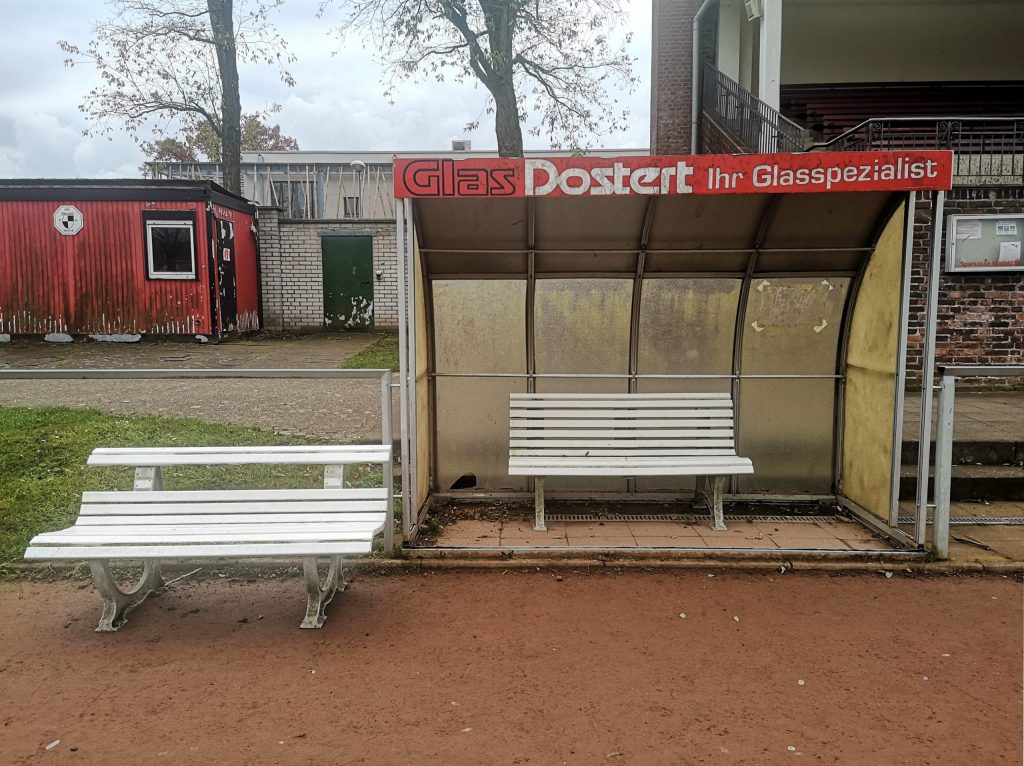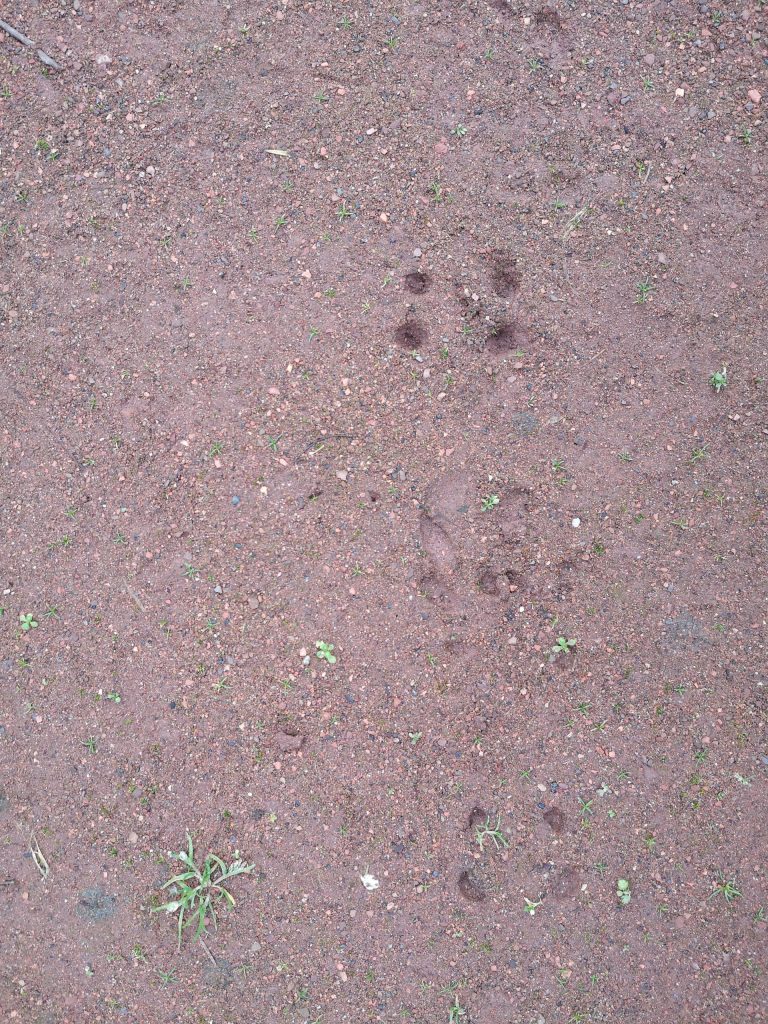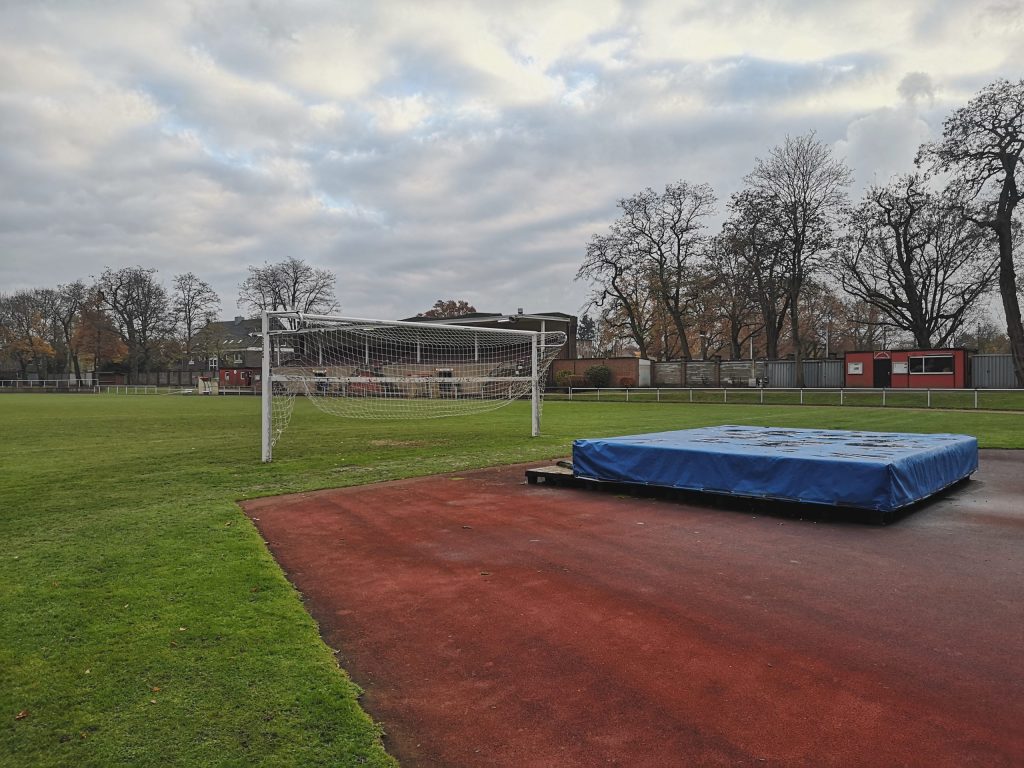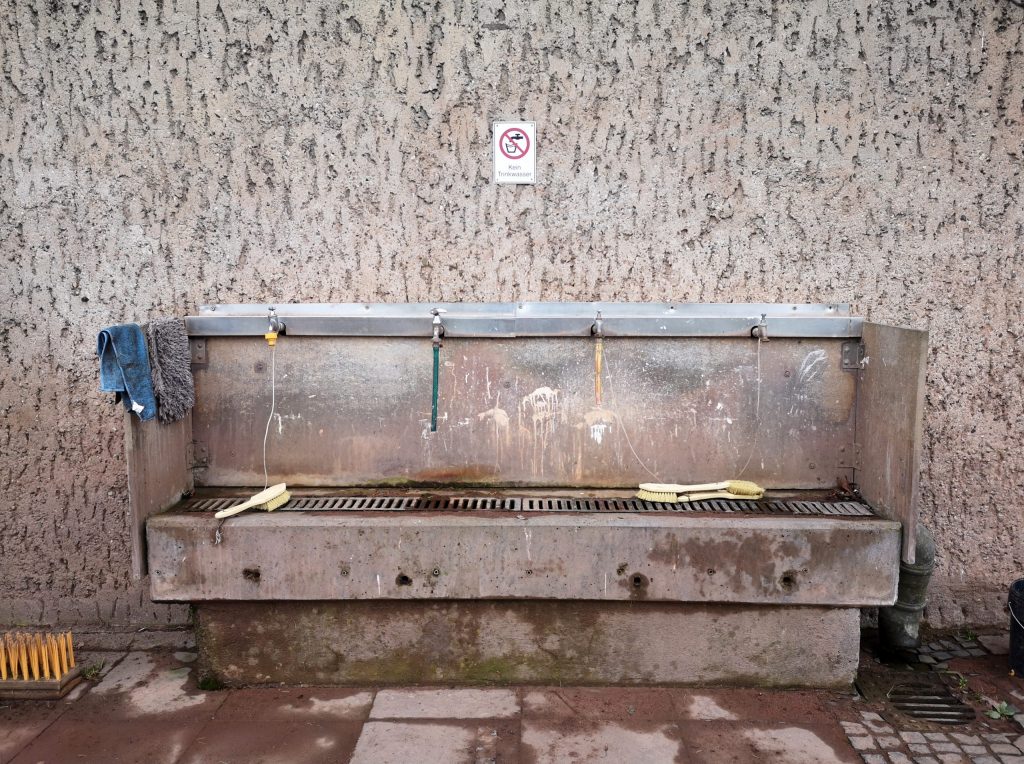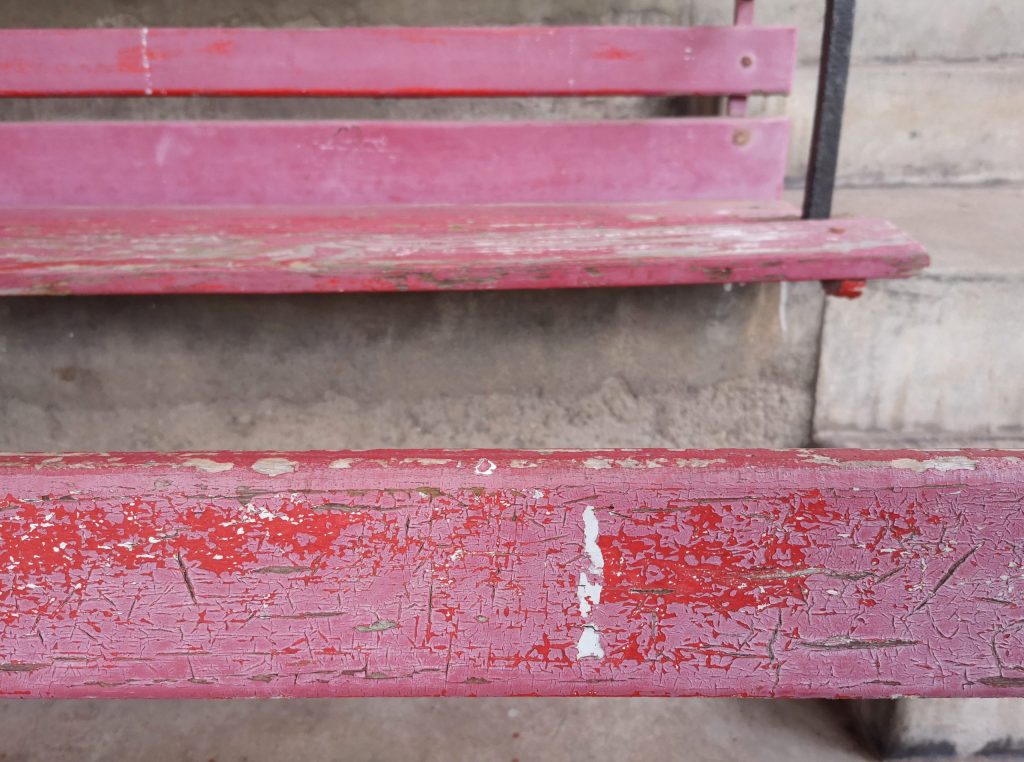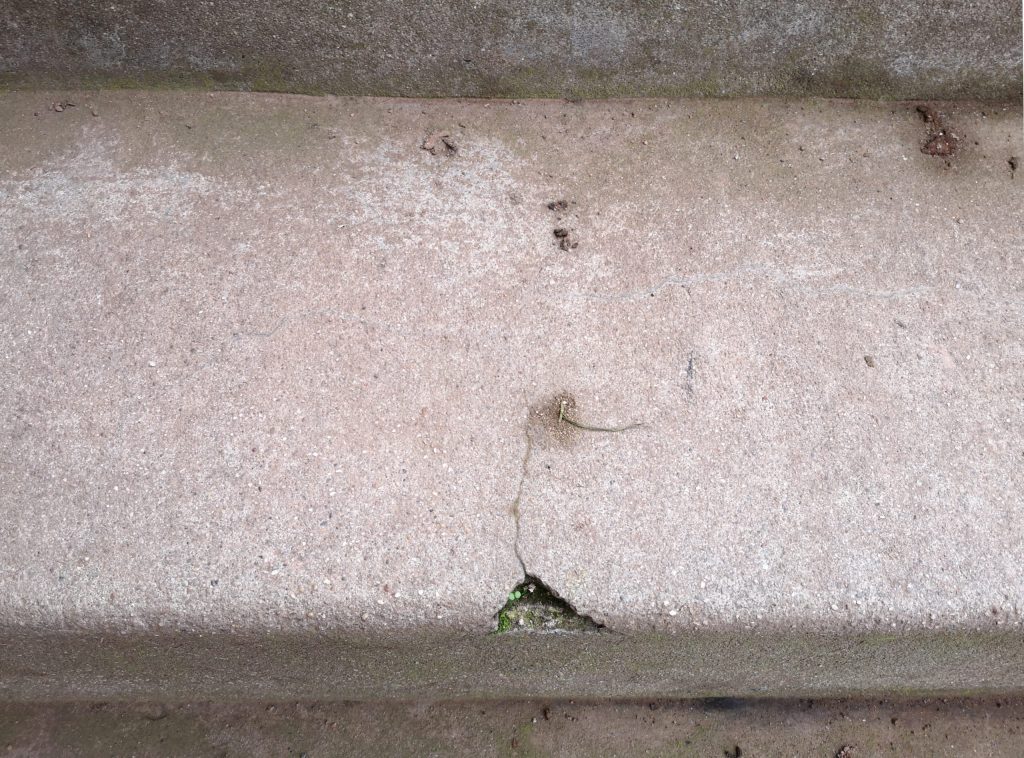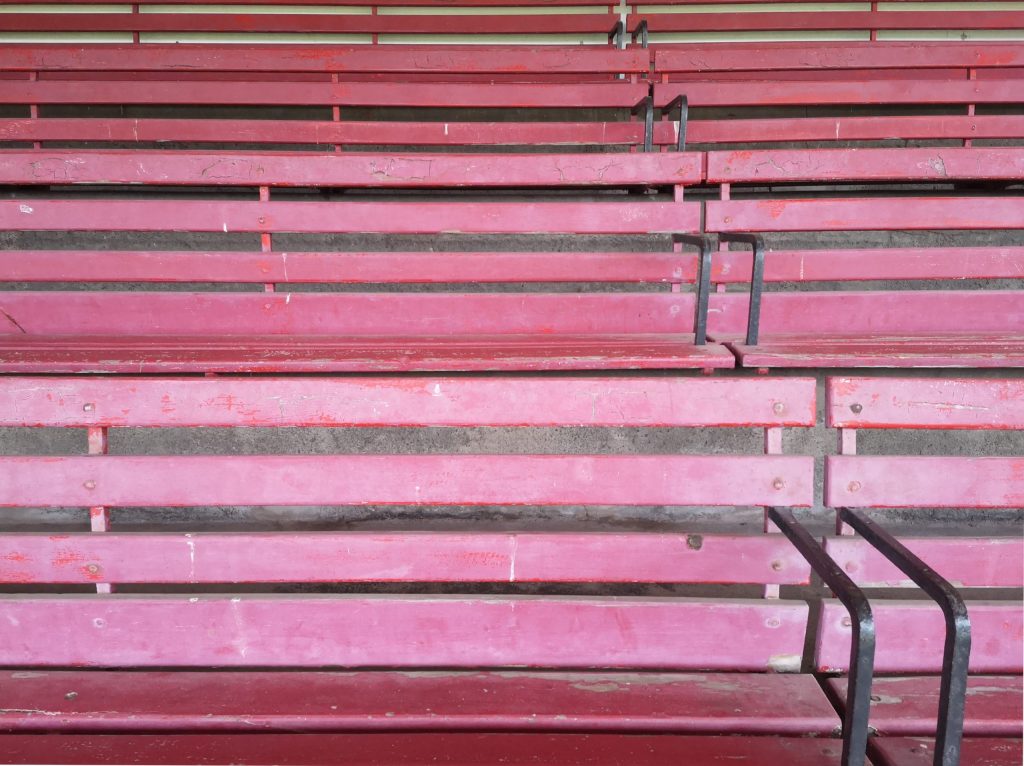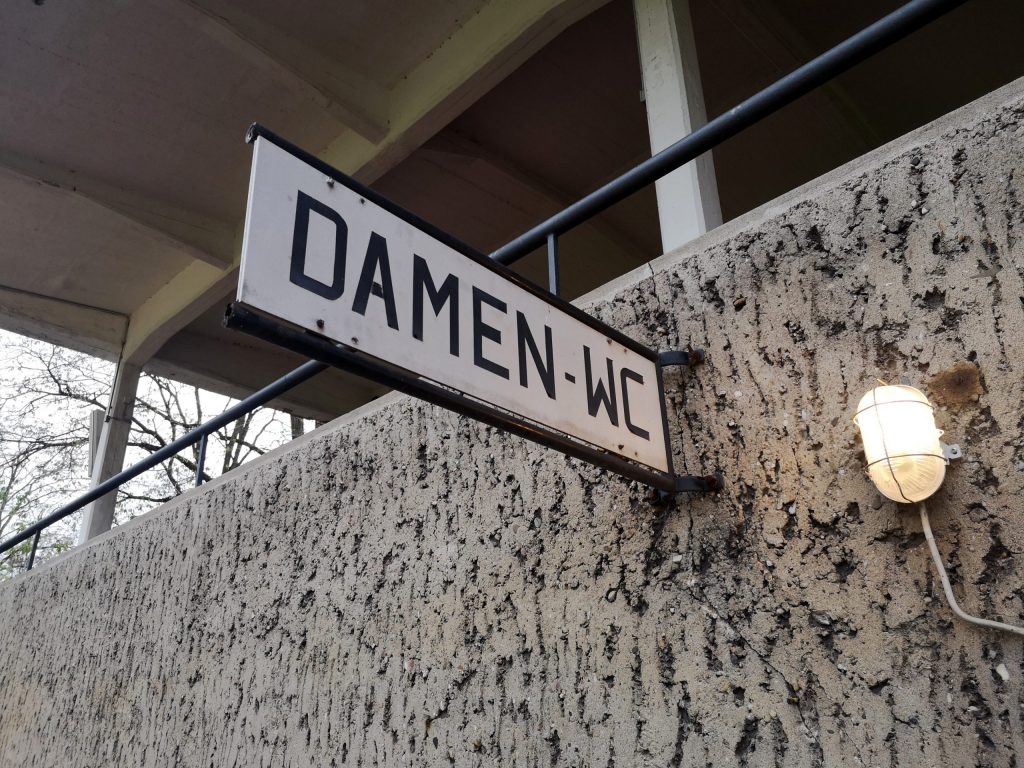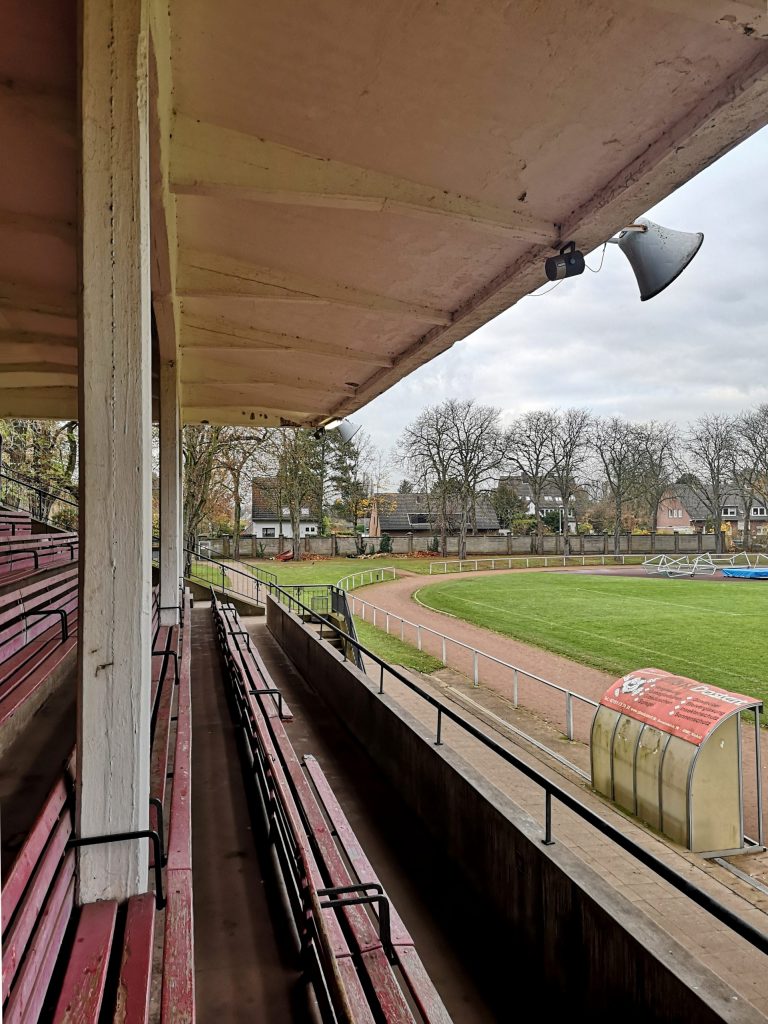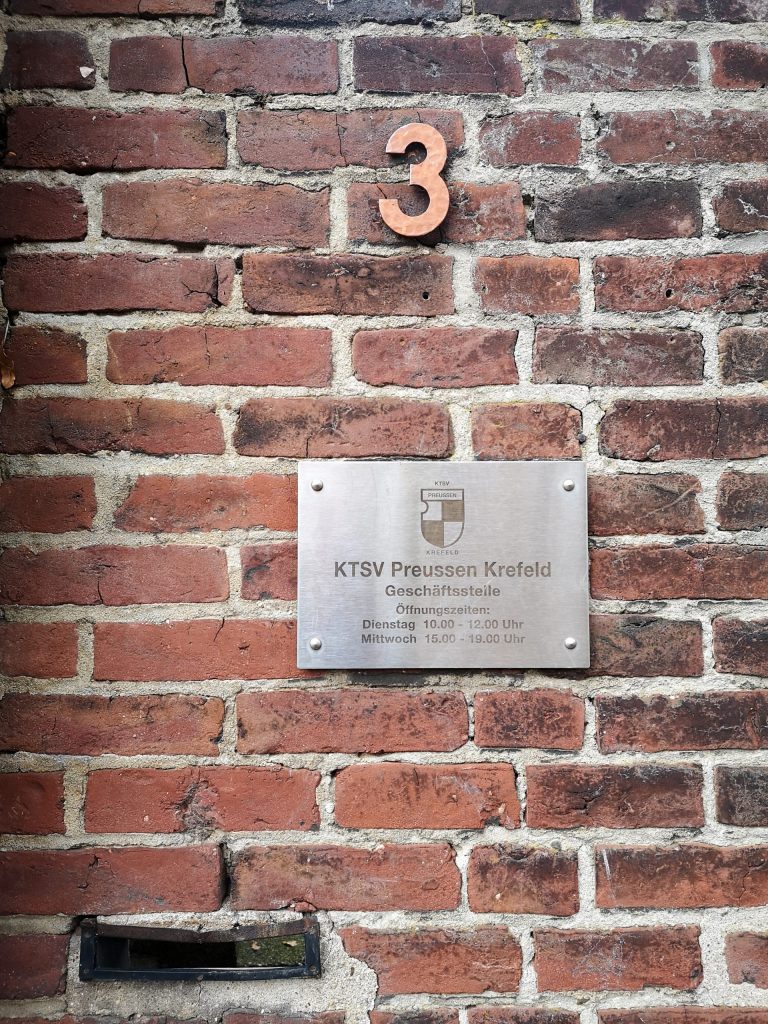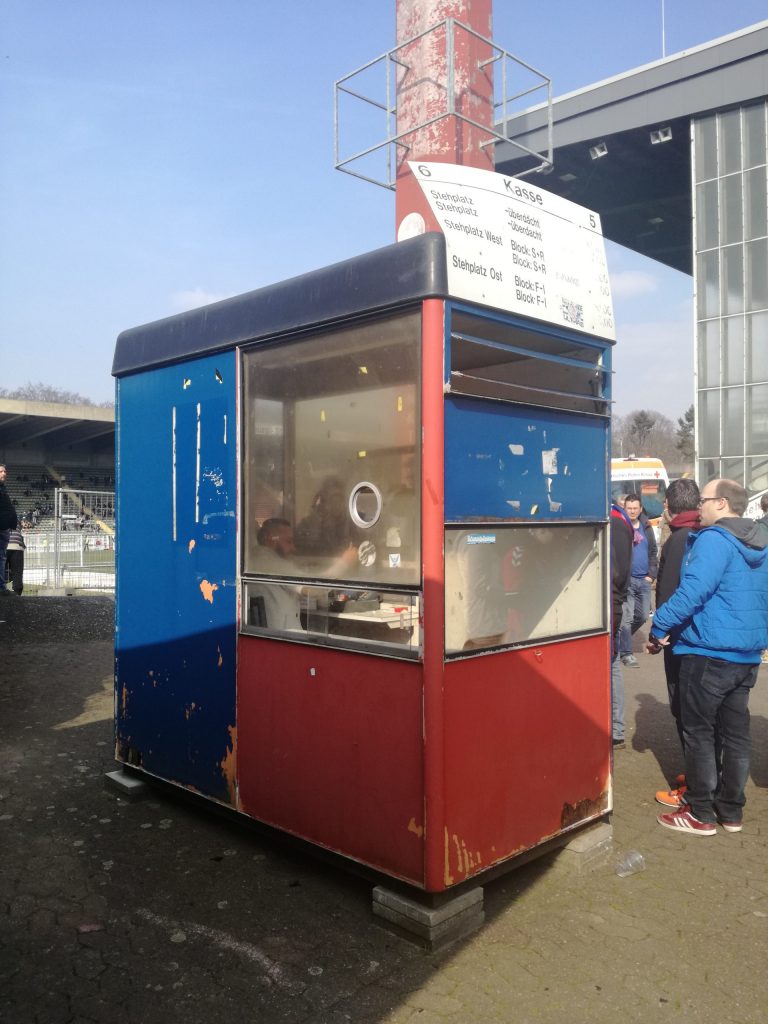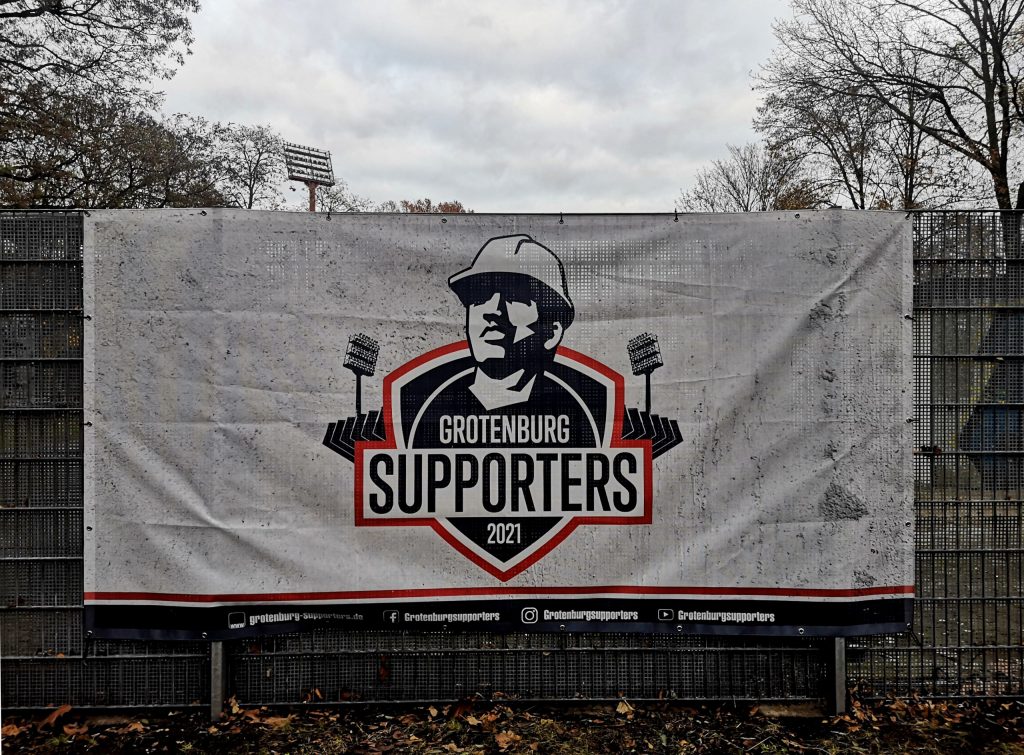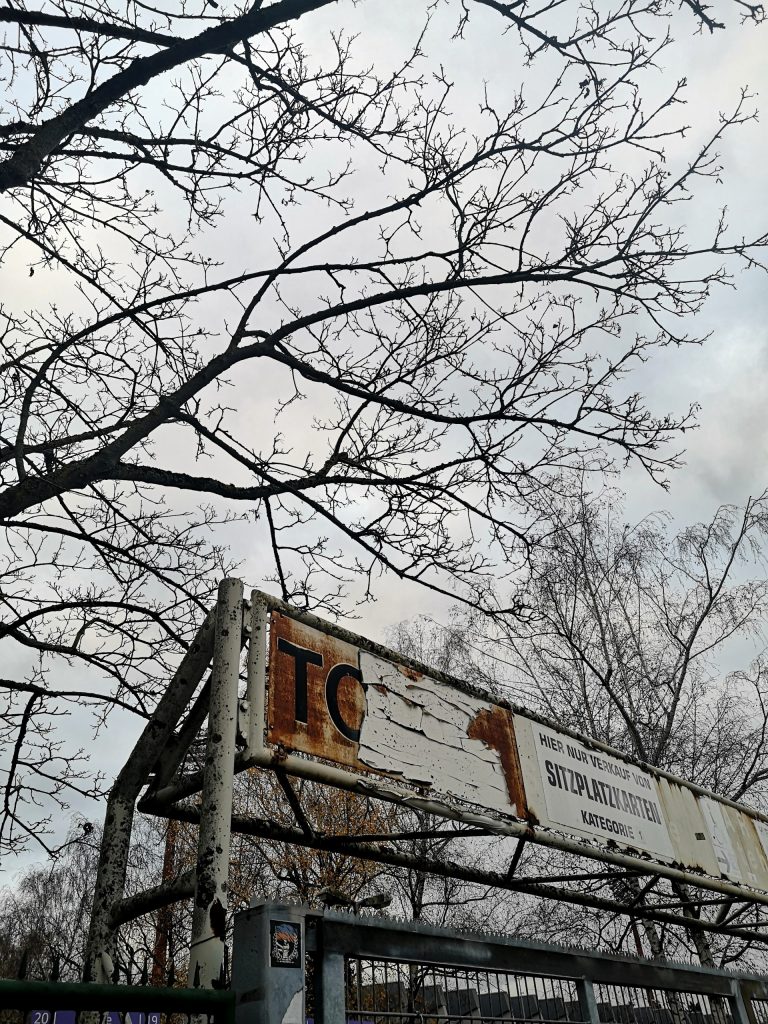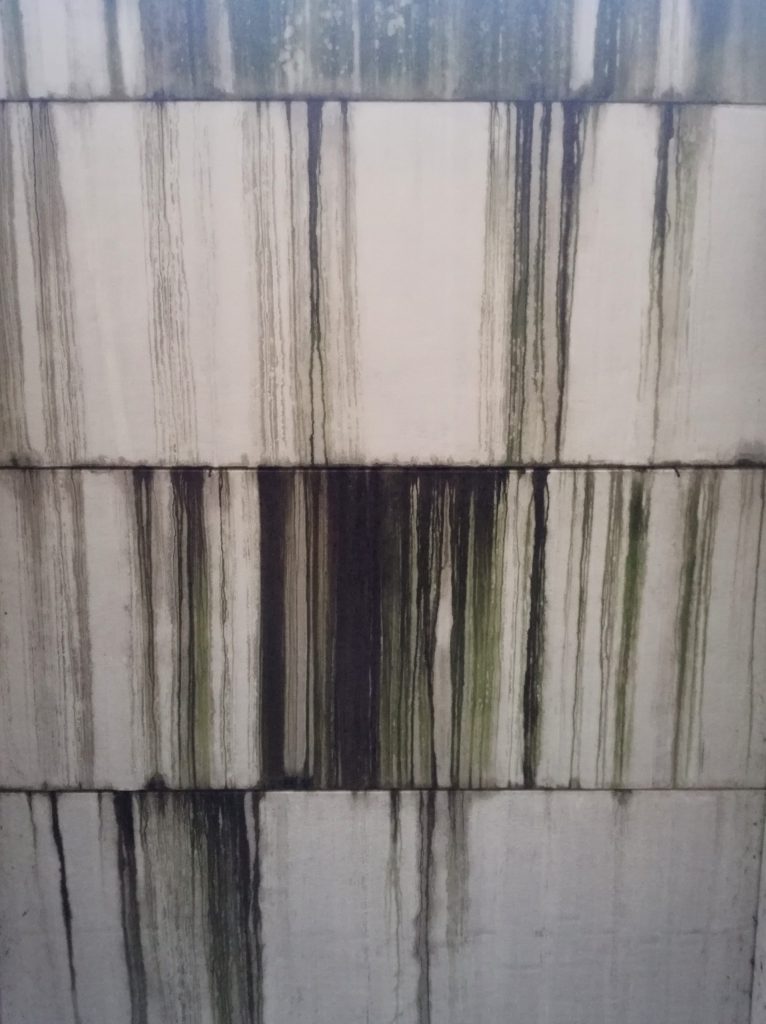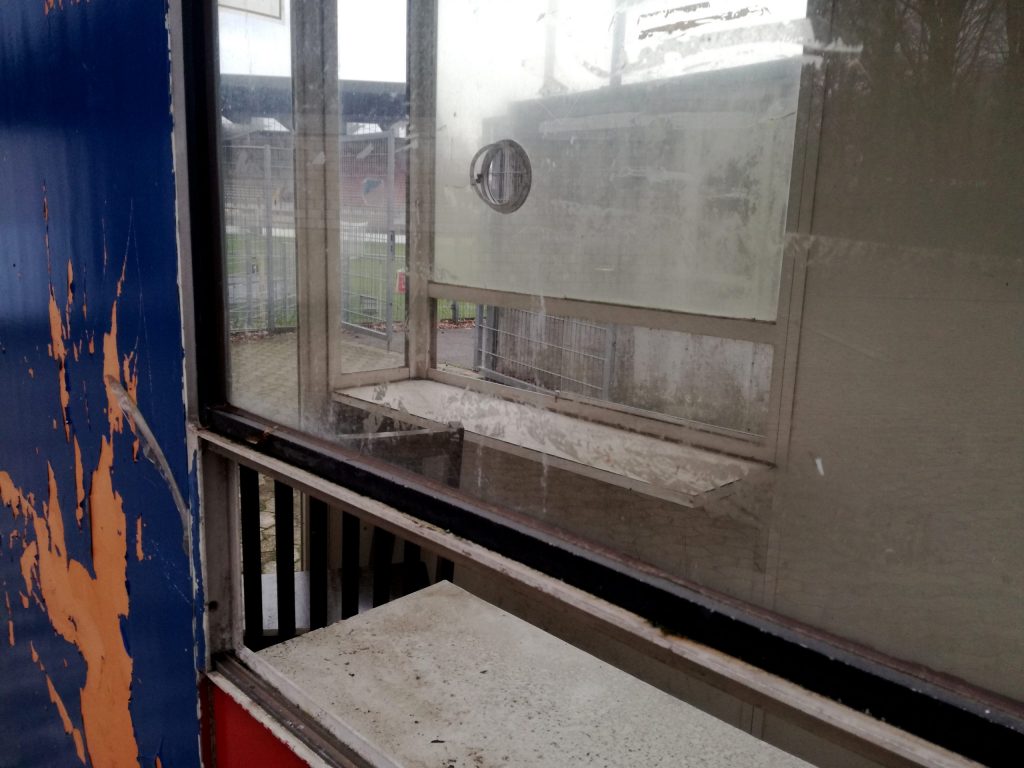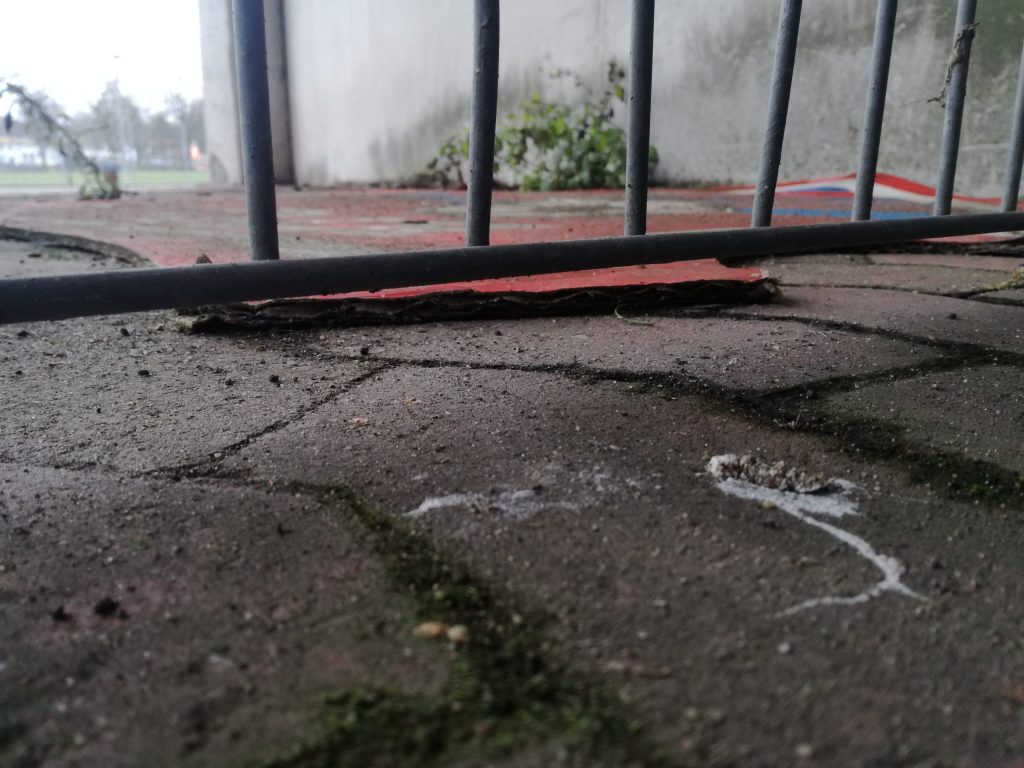The arena is the prototype of the modern soccer stadium. Ultra-modern and multifunctional, but in the eyes of many romantics also uniform, soulless and a symbol of the capitalization of sport. Where have they gone, the old concrete soccer temples, the wooden stands? Some of them are quietly decaying, others have already given way to housing developments, and when they do need to be renovated, it is often not without complications… Friedemann Dupelius has visited seven lost or forgotten soccer locations in Urbanana and documented them with his camera. The journey goes from Cologne-Weidenpesch to Oer-Erkenschwick. A homage to floodlight poles, metal railings and wooden benches.
Sportpark Weidenpesch, Köln
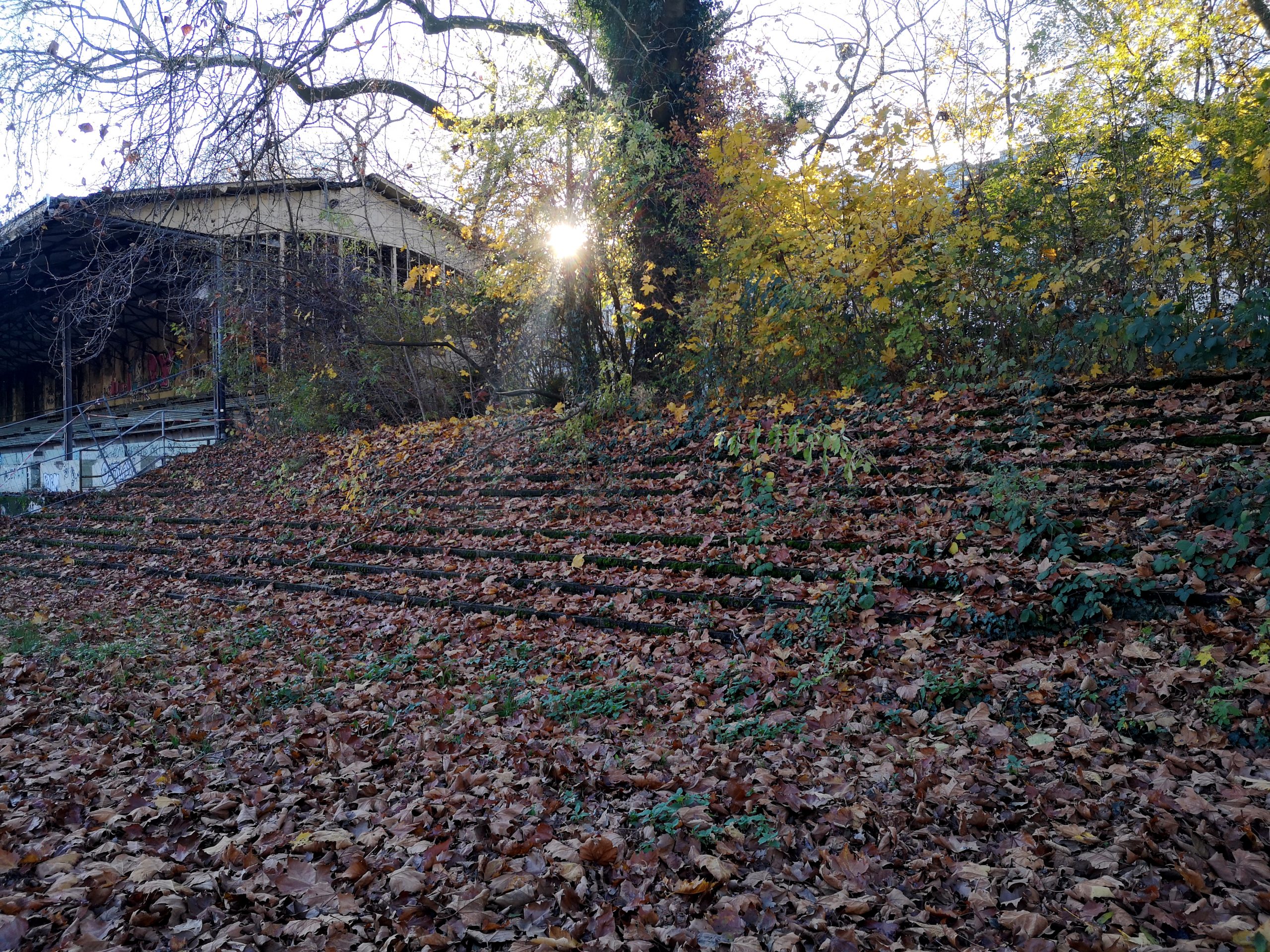
The scenery is fascinating, almost surreal: the grandstand of the Weidenpesch sports park in the north of Cologne, built in 1920, is rotting away. The concrete is covered in graffiti, wind whistles through the shattered glass, and all kinds of plants can be seen growing rampantly. Cologne has perhaps the “Lost Football Place” par excellence. In 1905 and 1910, the finals for the German soccer championship took place here. Until 2002, VfL Köln 99 used the stadium for district league games, and in the same year Sönke Wortmann shot scenes for his film “The Miracle of Bern” here.
After that the decay began… Since 1989, the grandstand has been a listed building. A petition campaigned for its renovation in 2019, but so far morbid charm prevails around the corner of the racecourse of the Cologne Riding Club, which meanwhile parks its horse transporters in front of the grandstand…
Glückauf-Kampfbahn Gelsenkirchen-Schalke
This is where the infamous “Schalker Kreisel” around Ernst Kuzorra and Freiz Szepan swirled almost 100 years ago. The Glückauf-Kampfbahn was built in 1927/28 on the site of the former Consolidation colliery. The stadium, designed for 34,000 people, was too small for soccer-mad Gelsenkirchen, which is why FC Schalke 04 moved to the newly built, larger Parkstadion in 1973. The stands in the Glückauf-Kampfbahn began to deteriorate until three of them were converted into earthen walls. The main stand, built in 1936, is a listed building. Today, DJK Teutonia Schalke-Nord plays in front of it on the artificial turf – but kids from the neighborhood also know that there are secret entrances here…
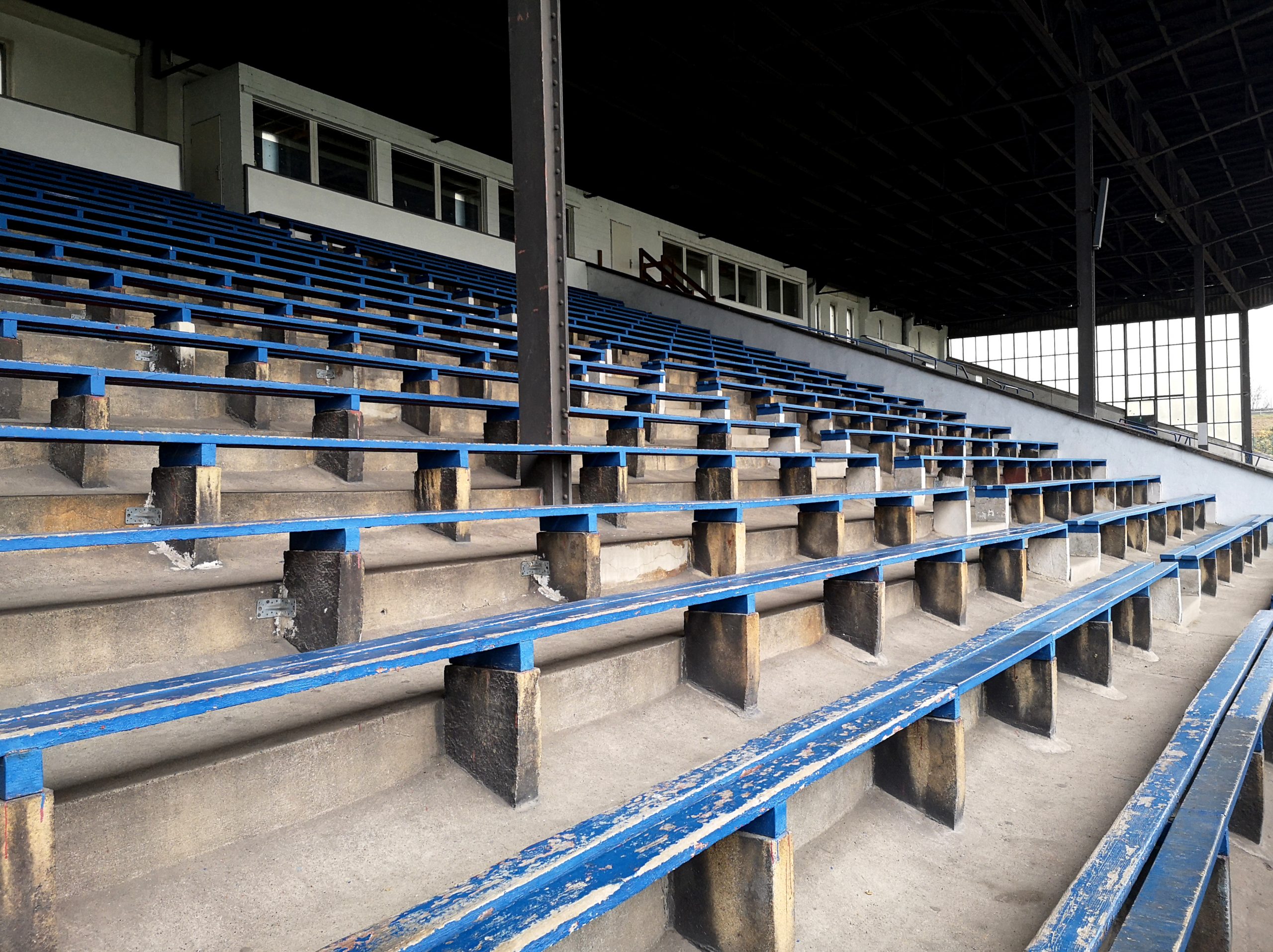
Stimberg-Stadion Erkenschwick
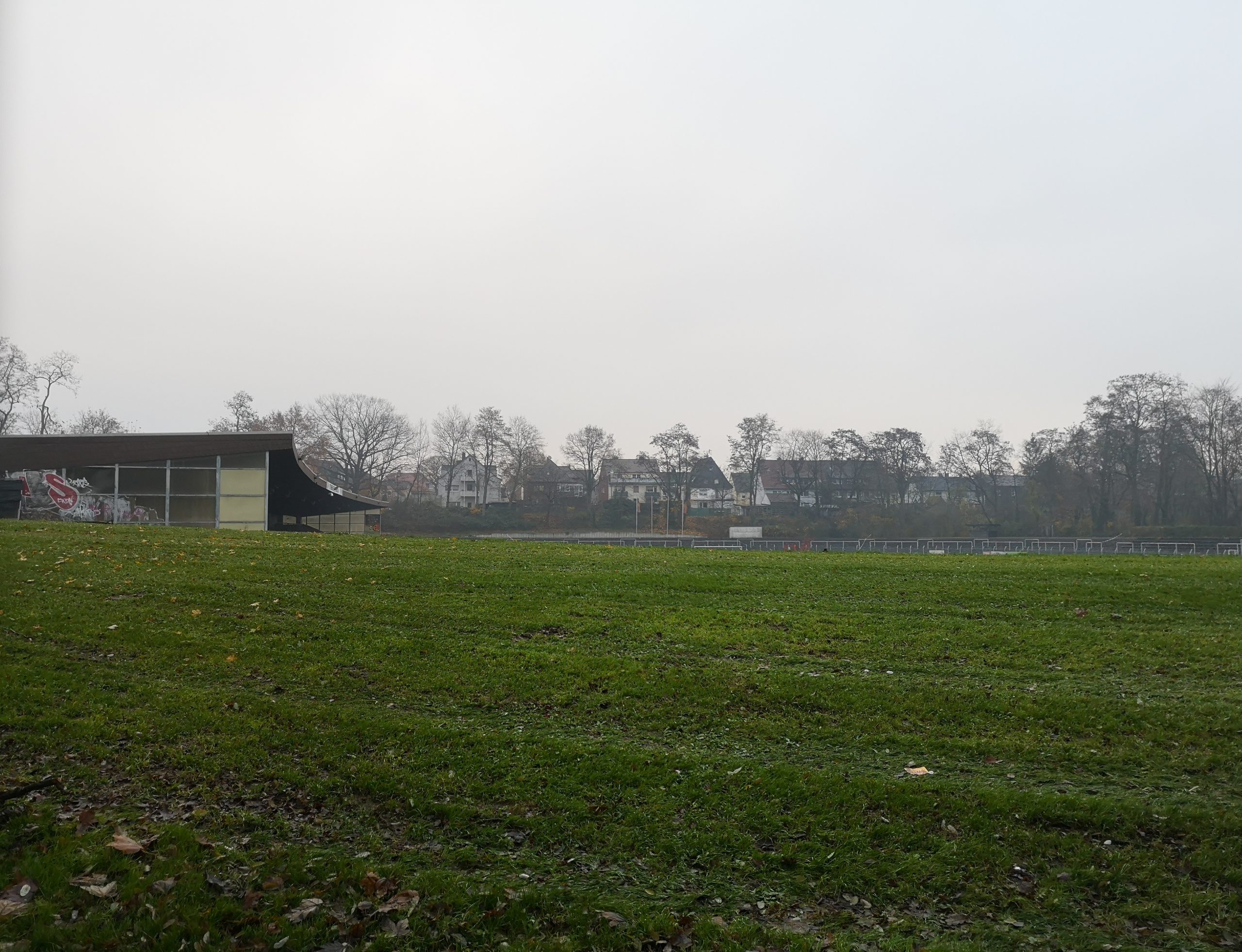
The history of SpVgg Erkenschwick is closely linked to the ups and downs of mining. From 1929 to 1934, the Stimberg-Stadion (originally: Hindenburg-Stadion) was built primarily by the unemployed on the site of the Ewald Fortsetzung colliery. Its crisis from the 1980s onward diminished the economic and thus sporting performance of SpVgg, which has brought the Second Bundesliga to the northern Ruhr region for a total of three years between 1974 and 1981. SpVgg Erkenschwick plays in the sixth-class Westfalenliga, but the atmosphere at the Stimberg between earth walls and washed concrete (last renovation: 1976!) offers first-class soccer romance.
Bökelberg Mönchengladbach
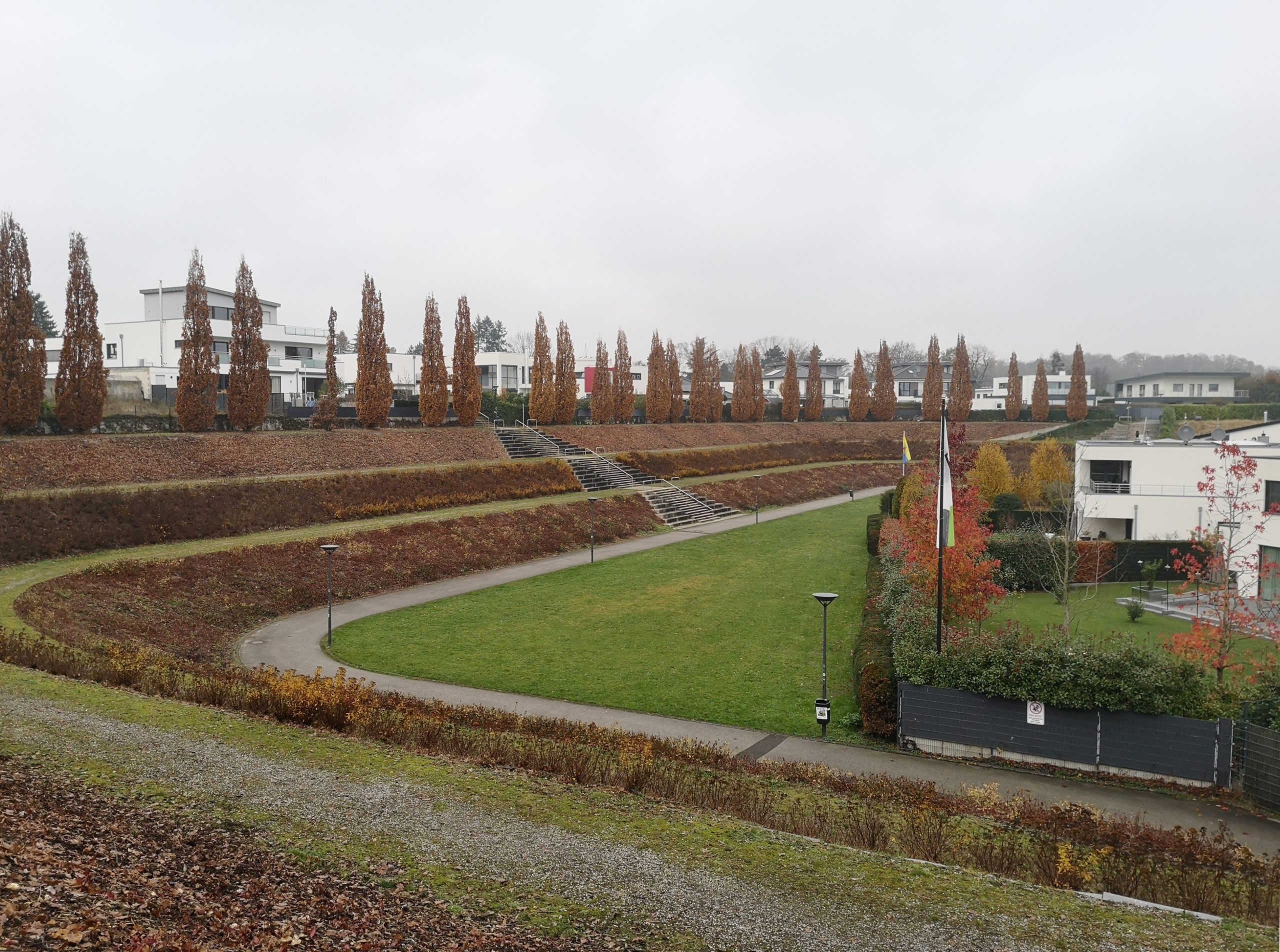
“Someone put a hole in here somewhere,” says the resident of the Bökelberg housing estate, who is trimming his hedge here, pointing to the meadow. “That’s where the corner flag is supposed to have been.” Where FC Bayern was once dispatched and German championships were celebrated, the grandstand-like mounds of earth are still a reminder of the old Bökelberg Stadium, whose last floodlight mast fell in 2006. Since 1978, the mythically charged soccer temple, which was built as early as 1919, has not been renovated. In 2004, Borussia Mönchengladbach moved to the new arena at Nordpark and the transformation of the Bökelberg into a residential neighborhood began. Earthen walls, railings, flags, a memorial site and the nostalgic tales of some residents keep a piece of the myth alive here.
Wersestadion Ahlen
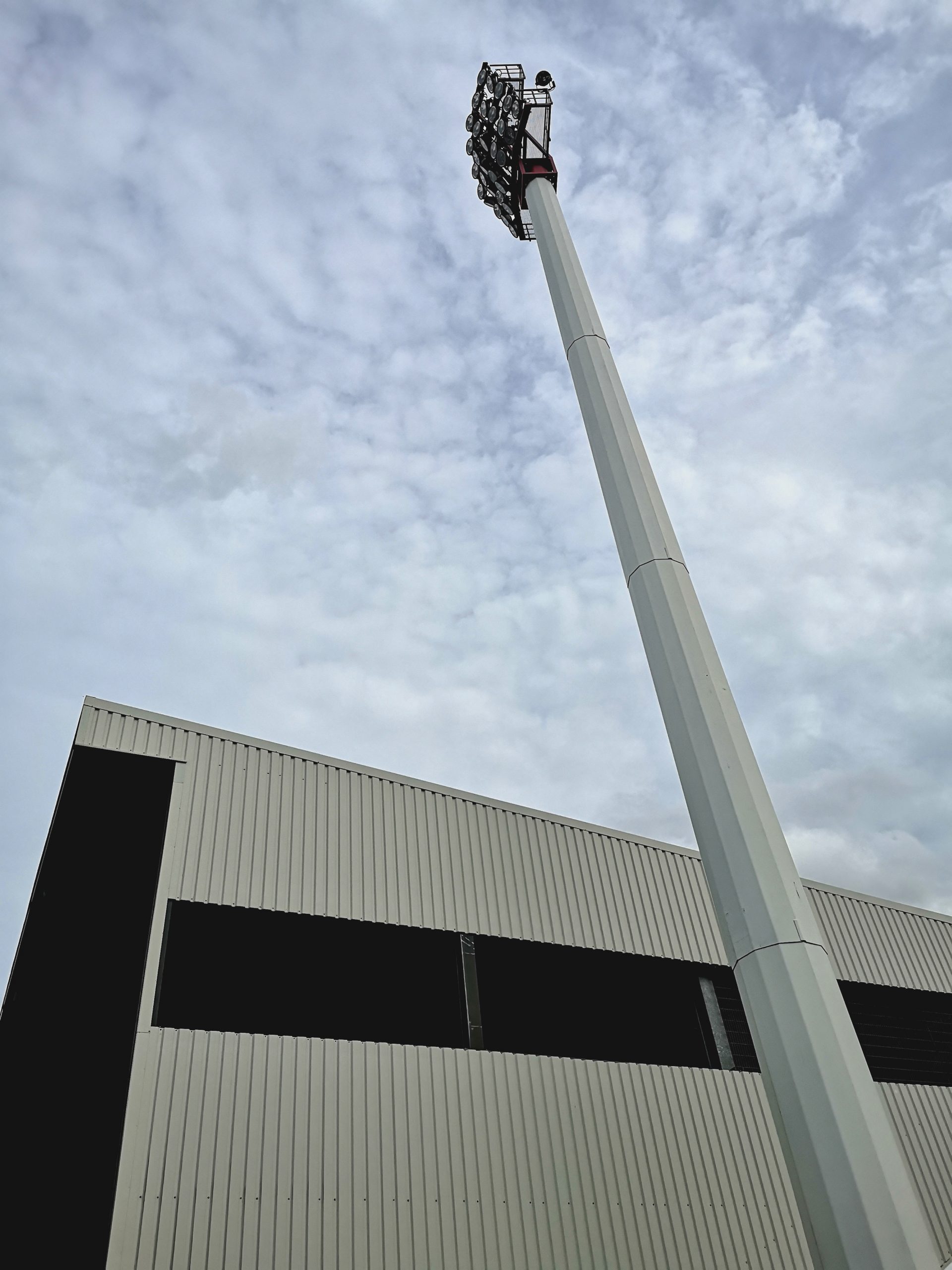
Although Ahlen is not part of the Ruhr region, it also has a mining tradition with the Westfalen colliery. The little river Werse meanders along the Ahlen colliery colony, and directly behind it there is the Wersestadion, built in 1949 (capacity: 12,500) – which was called “Glückaufkampfbahn” until 1997. This is where the players of Rot-Weiss Ahlen (formerly: LR Ahlen) toil. After a few years in the Second League, the team now plays in the fourth-tier Regionalliga West. Renovated for the last time in 1997, the Wersestadion is getting a bit long in the tooth – but the gilding and corrugated iron exude their own charm, and with a distance of only two meters to the pitch, visiting the stands is an intimate soccer experience.
Hubert-Houben-Kampfbahn Krefeld
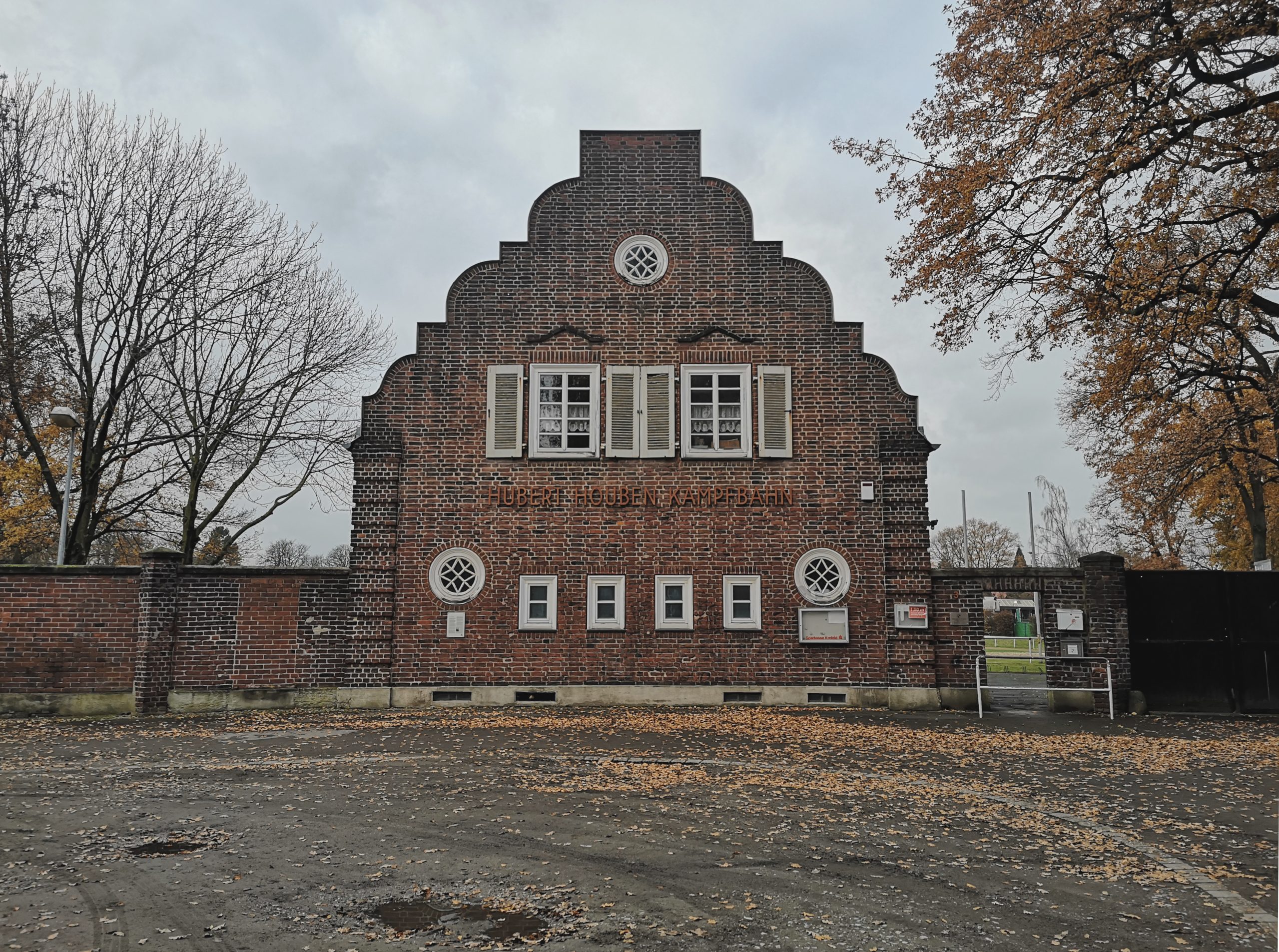
It lies inconspicuously between allotments, city forest and housing estates: The Hubert-Houben-Kampfbahn in Krefeld-Kliedbruch is the backdrop for the mental cinema when imagining the early years of soccer in Germany. In 1925, the stadium was built as “Sportplatz Blumenthal” and later renamed after track and field athlete Hubert Houben, who was one of the world’s best sprinters in the 1920s.
In 1960, it was the first West German stadium with a floodlight system (now demolished). The historic wooden grandstand seats 600 people and is one of the oldest grandstands of its kind still standing in Germany. The brick-built groundskeeper’s house at the entrance gate is also an eye-catcher. KTSV Preussen Krefeld plays in the B2 district league at the Hubert-Houben-Kampfbahn.
Grotenburg-Stadion, Krefeld
The Grotenburg in Krefeld is a place of longing for countless groundhoppers and soccer nostalgics. The imposing concrete stands from 1975 (south) and 1986 (north) and the red floodlight masts bear witness to the heyday of concrete soccer temples. But the ravages of time are also gnawing away at this example, which was built in 1927. For decades, no investment was made in renovating the stadium, which fell at the feet of the home team KFC Uerdingen. Since May 2018, it has not been able to play a home game in the Grotenburg. Since the renovation work is still tenacious, the fans recently lent a hand themselves: Around 450 KFC supporters with a talent for handicrafts are currently doing their bit to ensure that regional league team KFC Uerdingen can return home as soon as possible.
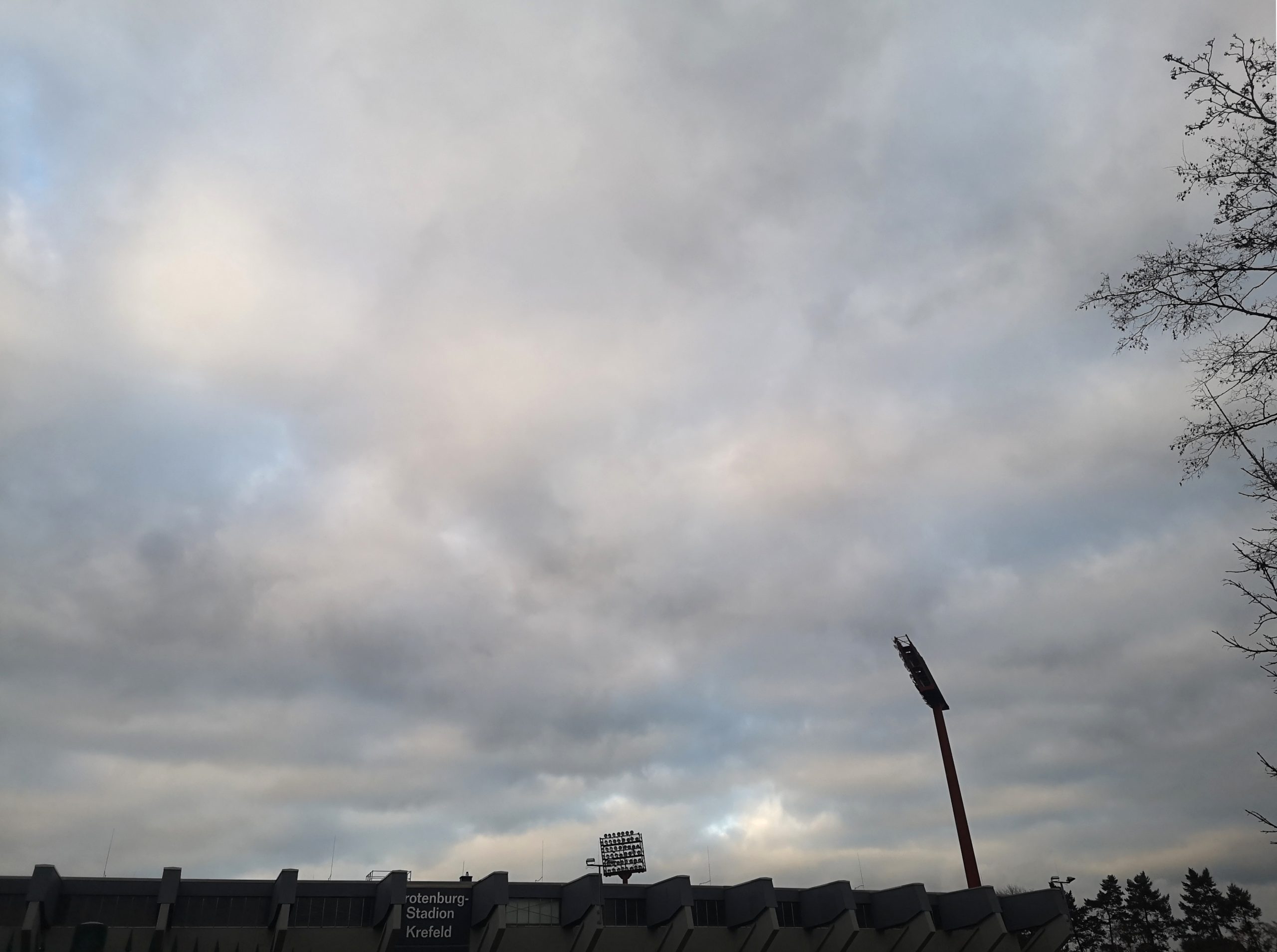
Text & Fotos: Friedemann Dupelius.


